Opaque News
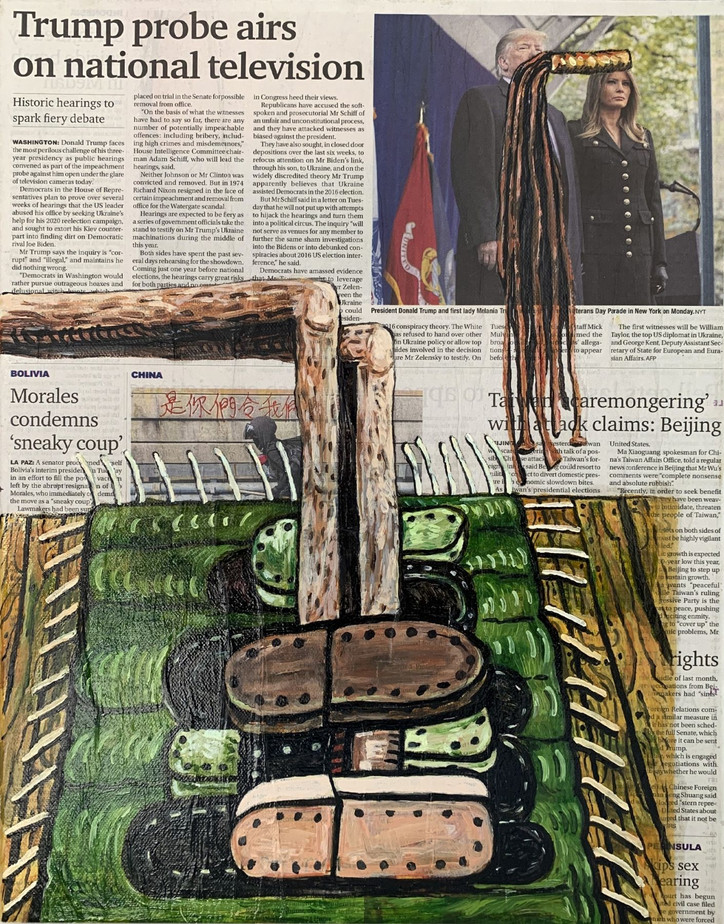
Lead image: untitled 2020 (Green Rug, 1976) 2020 Acrylic and newspaper on linen 11 7/8 x 15 3/4 in.
Check out more featured artworks below.
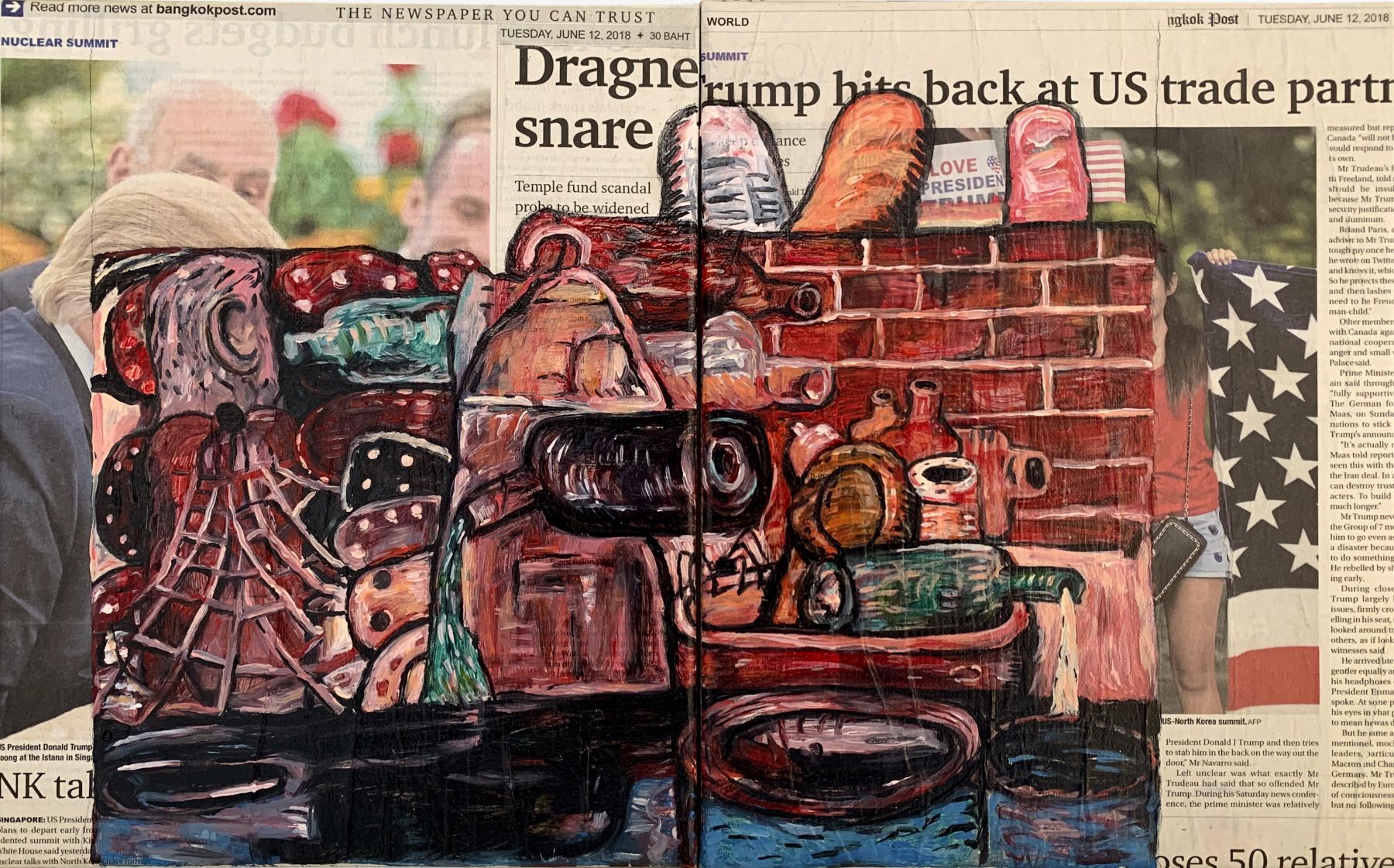

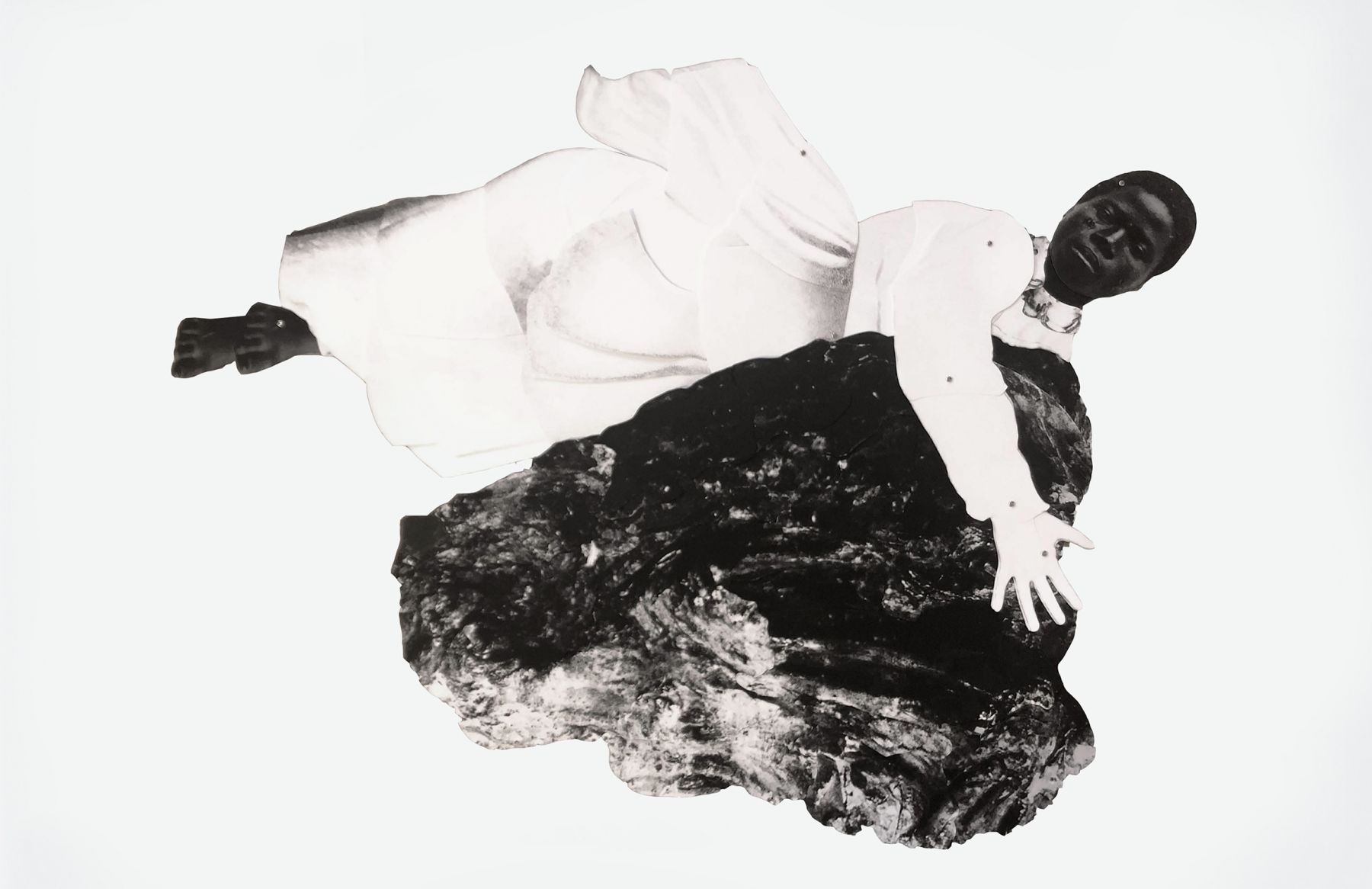



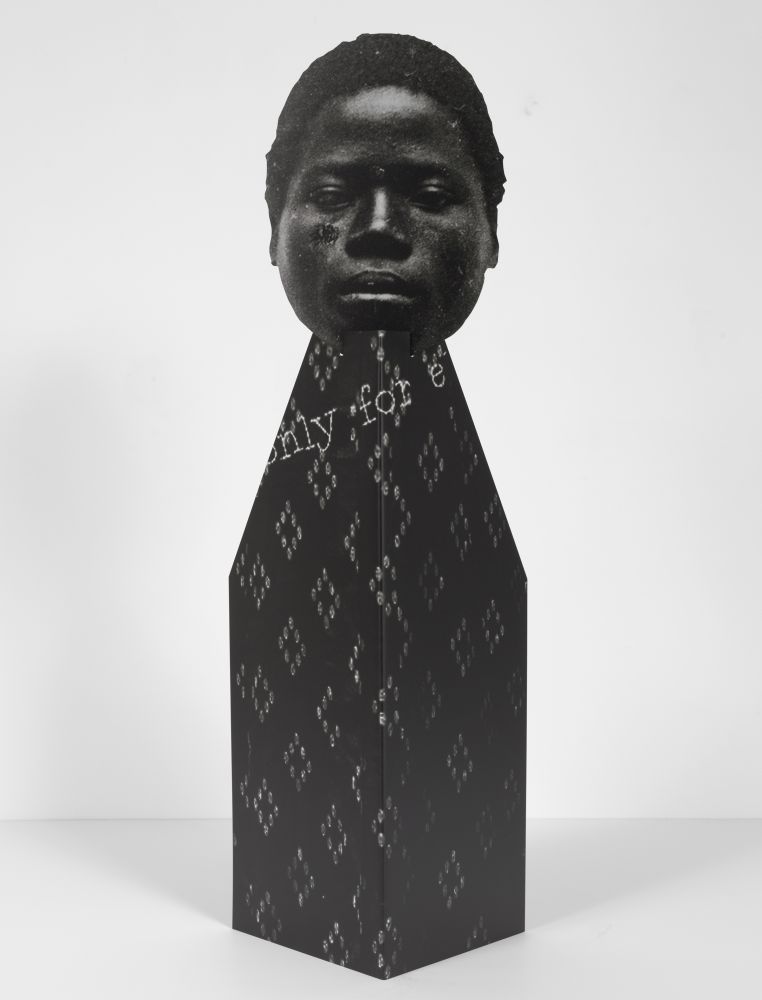
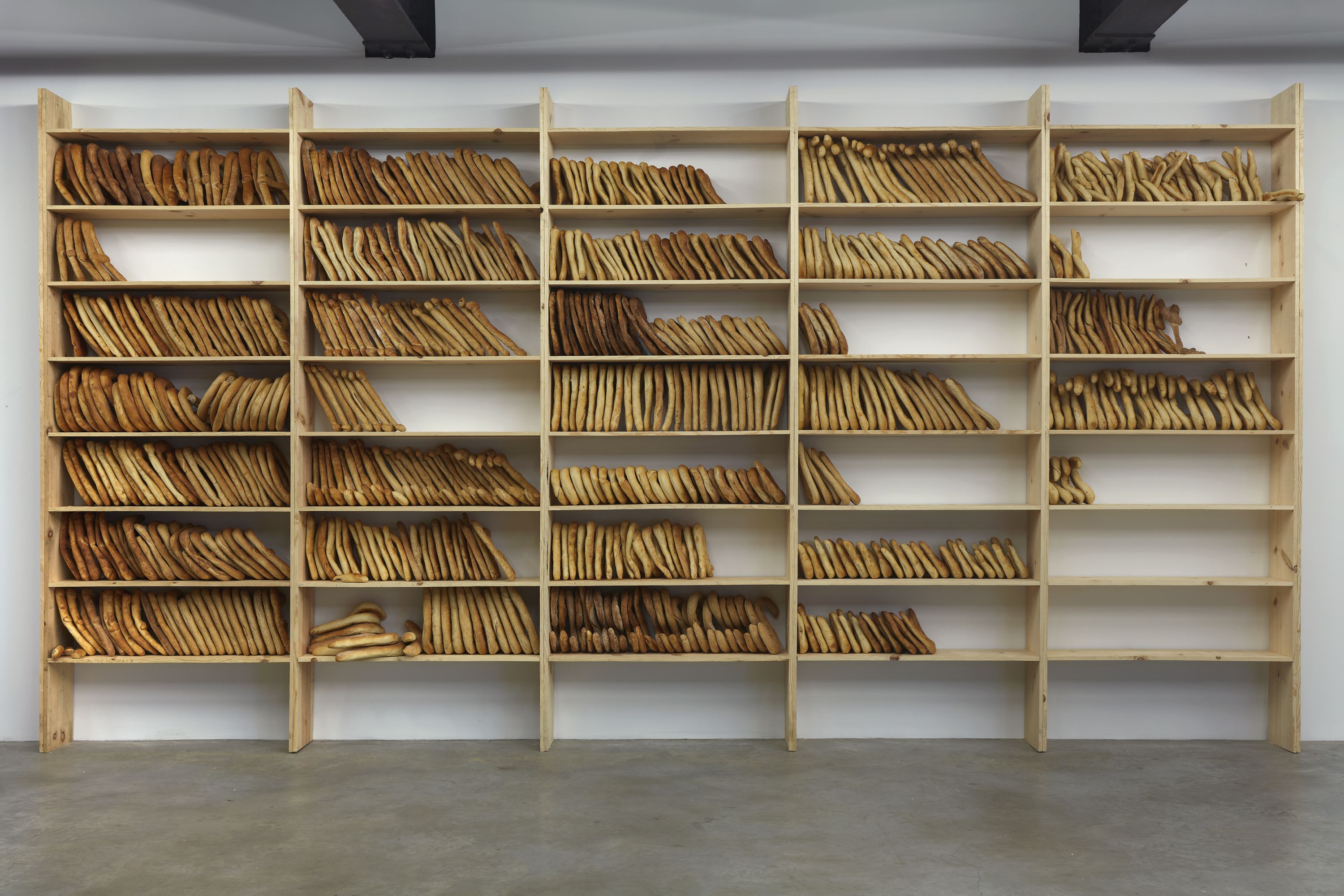
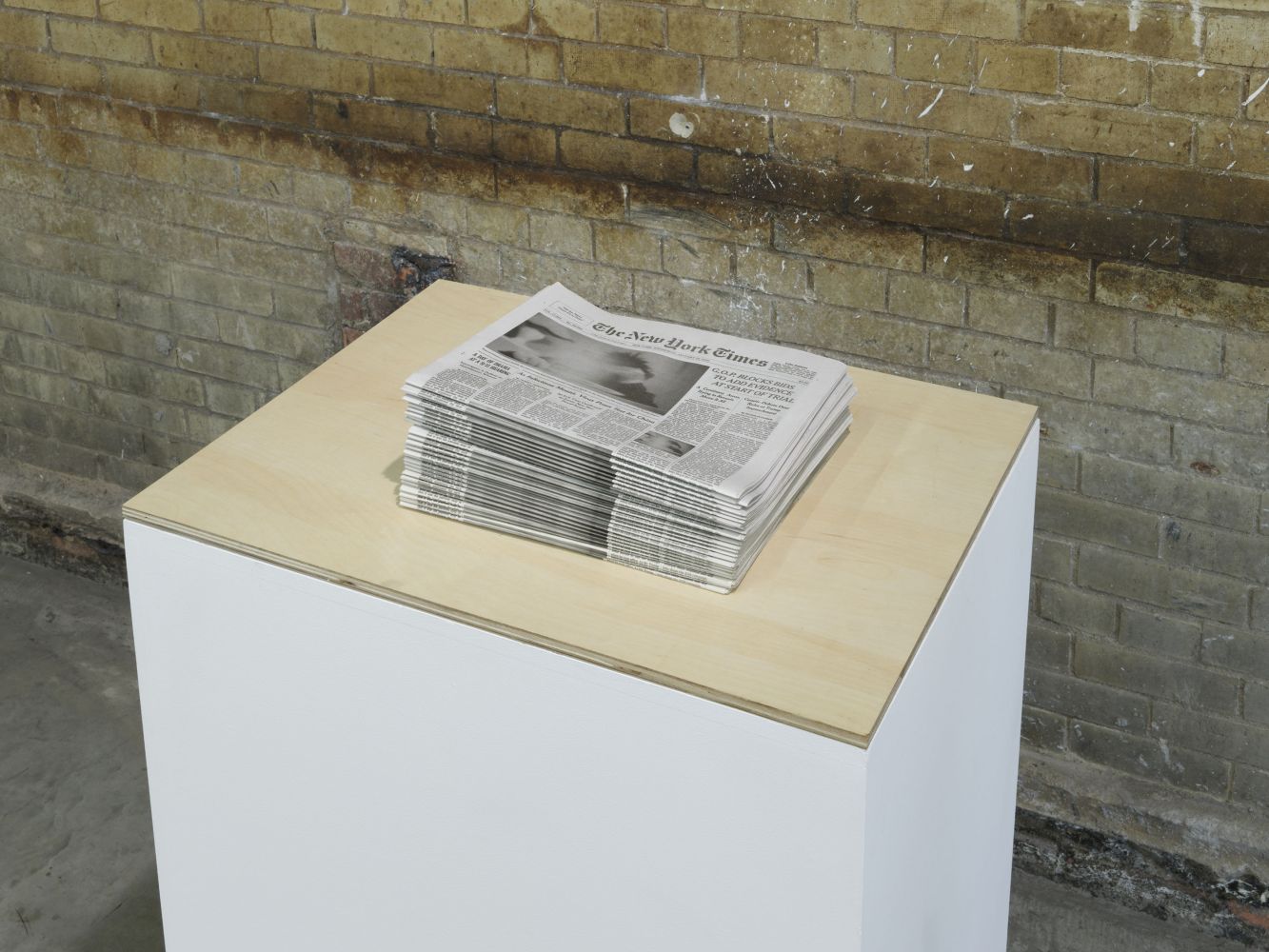
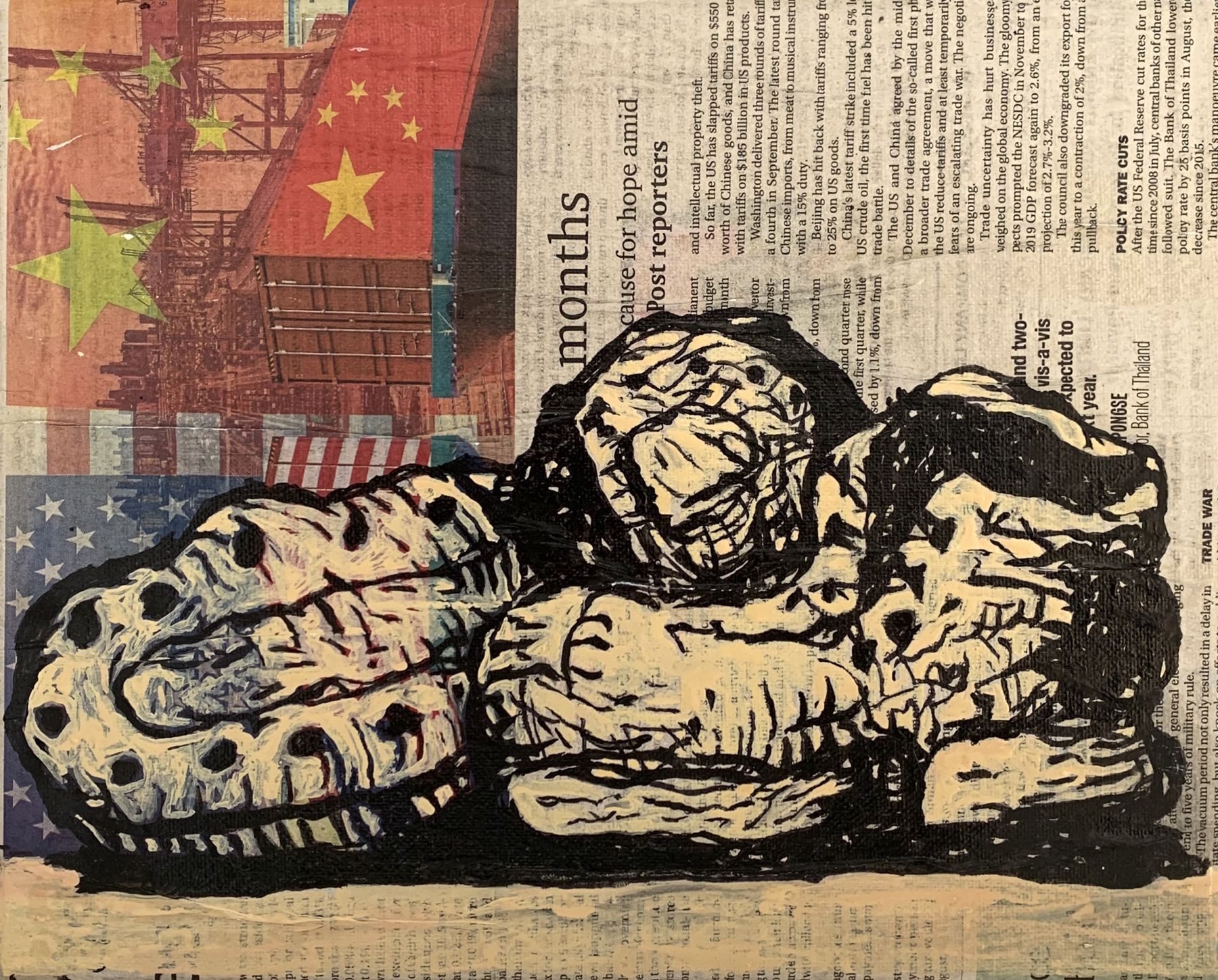
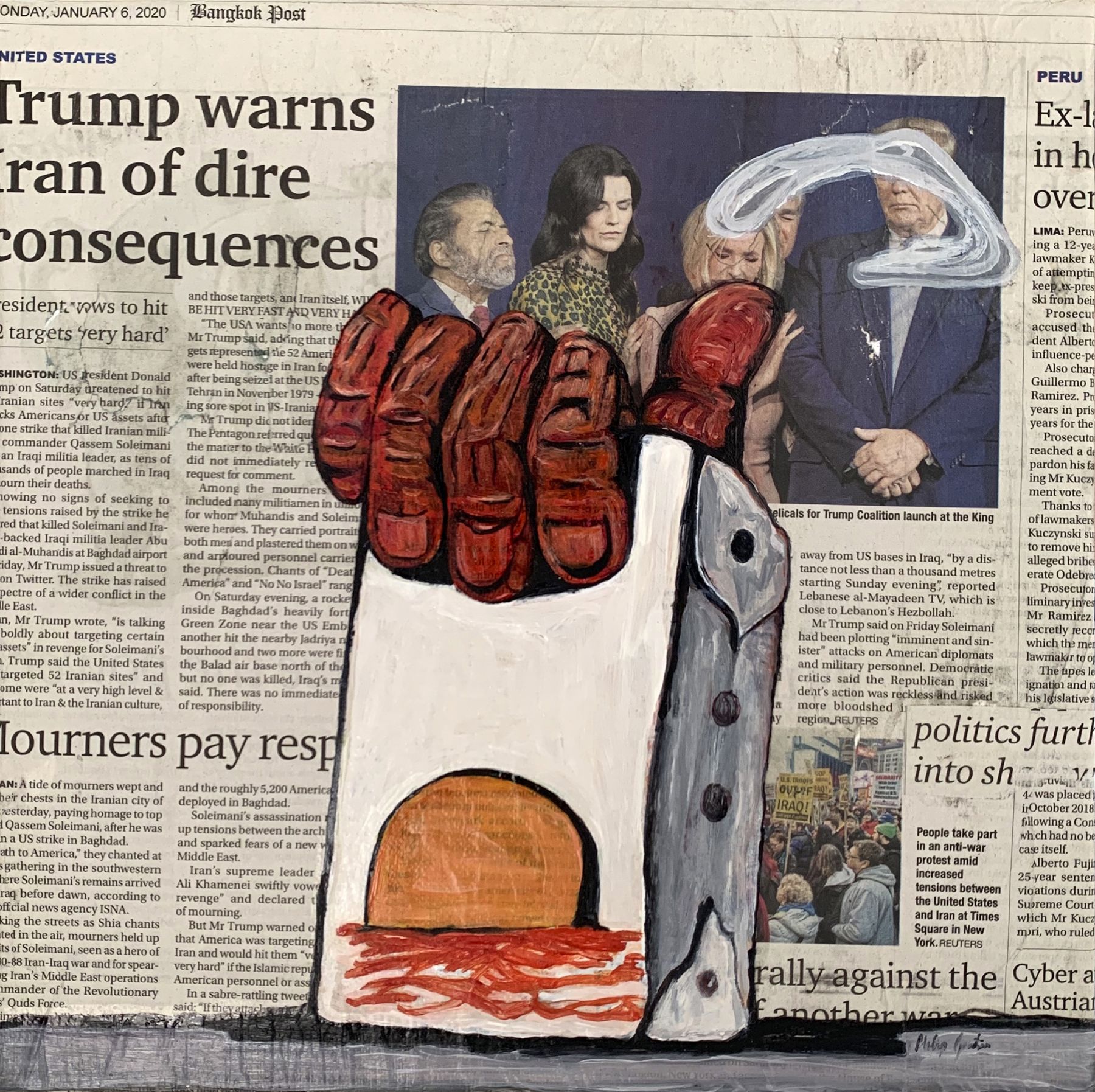
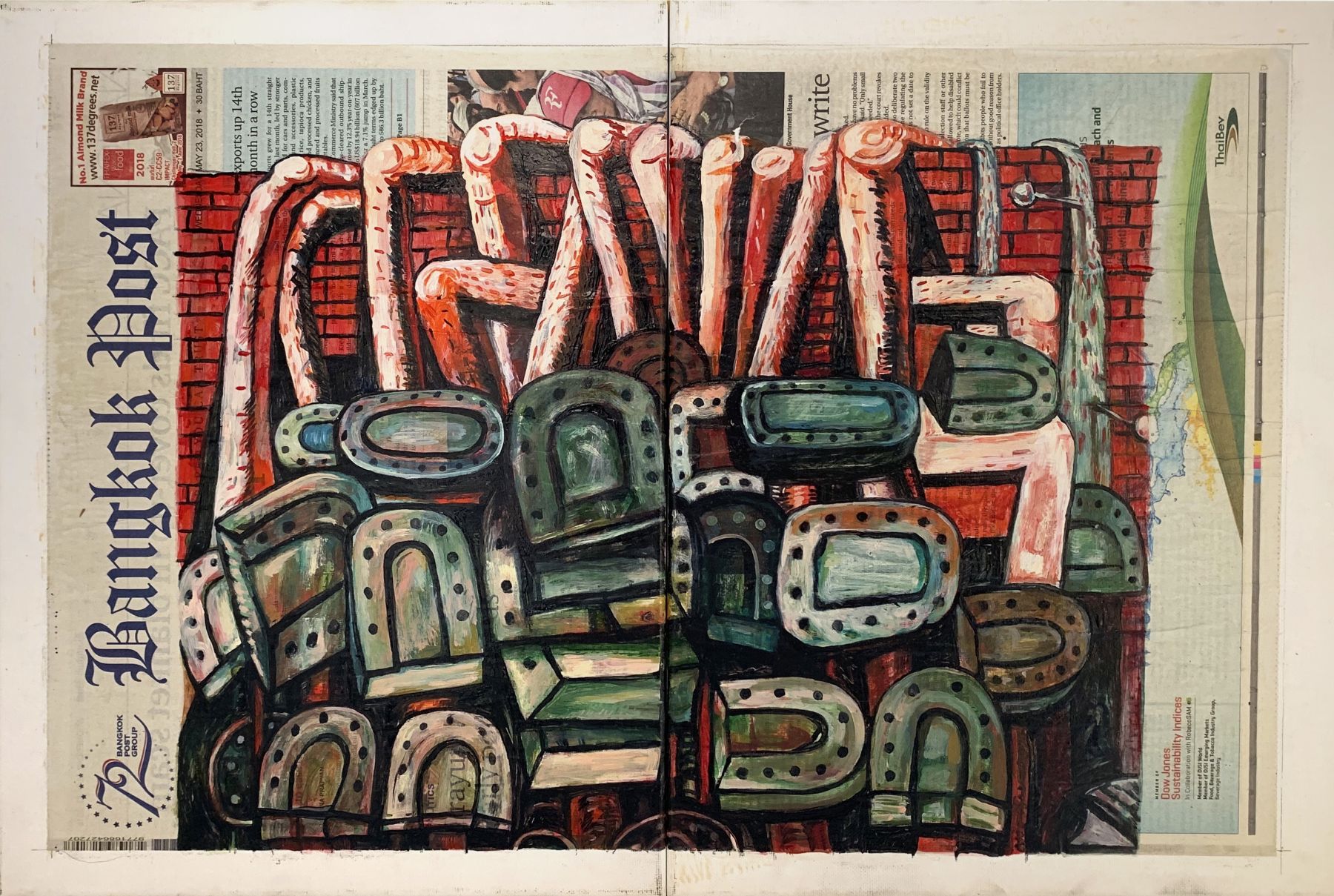
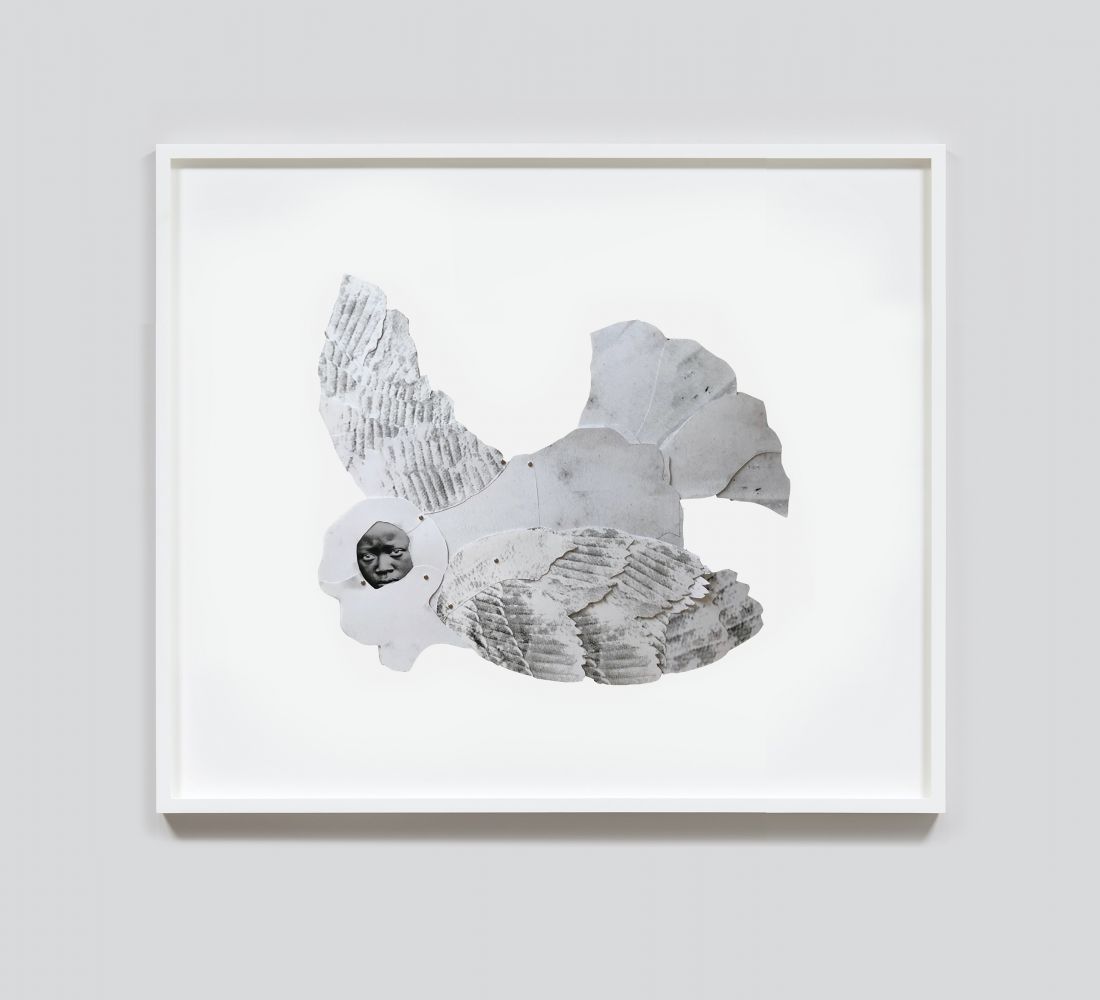
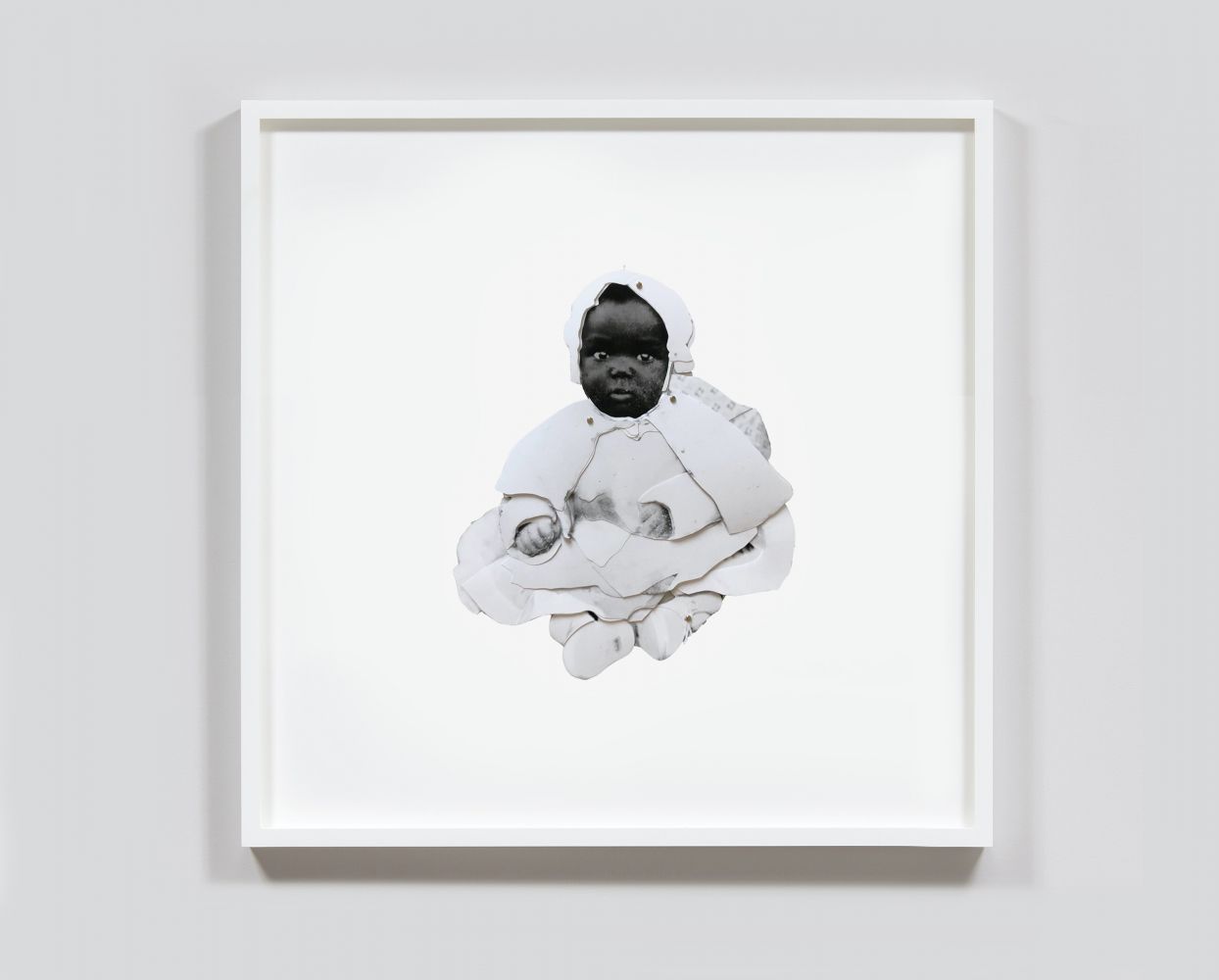
Stay informed on our latest news!

Lead image: untitled 2020 (Green Rug, 1976) 2020 Acrylic and newspaper on linen 11 7/8 x 15 3/4 in.
Check out more featured artworks below.














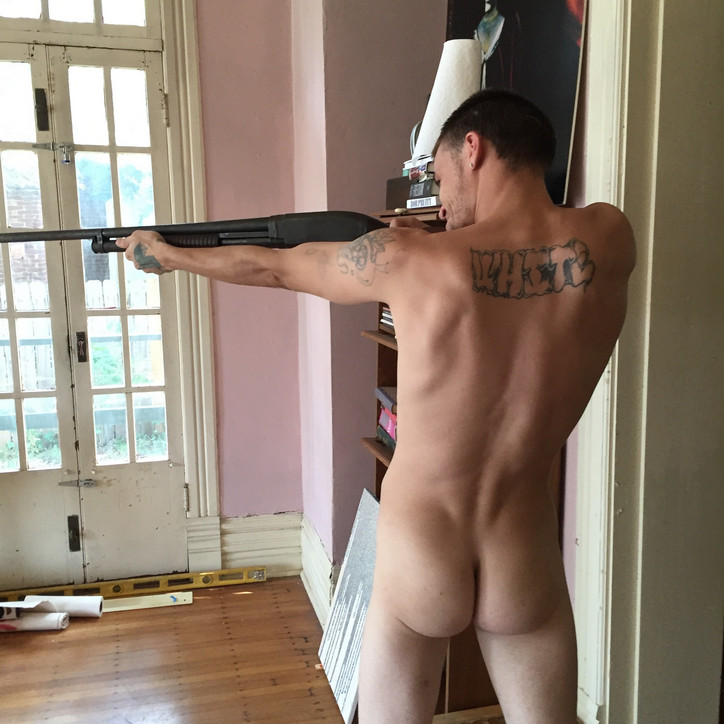
Chivas Clem, Greg with My Grandfather’s Shotgun, From Behind, 2016. Courtesy of the artist and Dallas Contemporary.
Growing up in Texas, Clem harbored a deep-seated phobia of men and boys, a fear rooted in the South’s rigid norms of masculinity. His work today reflects both a confrontation with that past and an attempt to dismantle the very archetypes that once terrified him. Though Clem forms close relationships with his models, his perspective is different from Clark's. While Clark was fully embedded in the lives of his subjects — living, using, and suffering with them — Clem remains both insider and outsider, woven into the fabric of Paris, Texas, yet at a careful distance from the precarious lives of the men he photographs. Shirttail Kin tackles broader American anxieties, particularly the "redneck" stereotype often entangled with racism, homophobia, and violence. Clem’s work challenges these assumptions, offering a glimpse of the fragile humanity that persists beneath the cultural caricatures.
Ahead of the opening, I called Clem from New York. He answered from his dilapidated home-studio in Paris, Texas, where many of these photographs were taken. We spoke about Southern masculinity, reconciling with his childhood phobia, the serendipity of meeting his models, and how his work balances despair, darkness, and innocence.
Hi Chivas, how's it going?
Chivas Clem— It’s going okay, I guess. I'm ready for summer to be over kind of.
I feel the same way.
It's miserable in Texas. It was like 113 degrees in my car the other day.
That's awful.
No, it's gotten really insane. I grew up here and when I was a kid, it was never like this. It was hot in the summer, but it wasn't like this.
I grew up in New York, and I feel like that about our summer thunderstorms. They were never as crazy as they are now.
Yeah. It's true!
When I first saw some of the photos in Shirttail Kin I had a visceral reaction, I teared up at some of them.
Oh, God. I'm so happy to hear that. People have such dramatically different reactions to the work. Occasionally I'll show the work to somebody, and they're very moved by it, even to tears, and then sometimes I show it to people and they see it as soft-core pornography.
I had a show in Houston a couple of years ago with Bill Arning, and Bill caught this guy masturbating in the gallery, which is kind of flattering in a way. I mean, I can't imagine that happening at David Zwirner.
Yeah, probably not. I didn't view the photographs as pornographic. What resonated most was the act of seeing these men, depicting them through your lens, and now, exhibiting the images in a show at Dallas Contemporary. There’s this American subculture that’s deeply marginalized and this project, its placement, defies that.
People don't talk about that with the work that often, but it is very much about them feeling seen. A huge part of my work is building this sense of intimacy with them so that they’re comfortable with me. It all happens very organically, I've never done a formal audition or anything, and they're all just local people that I've met. I met one of them at a gas station, and another while hitchhiking, and I’ve cultivated friendships with all of them. A lot of them sit for me over and over again.
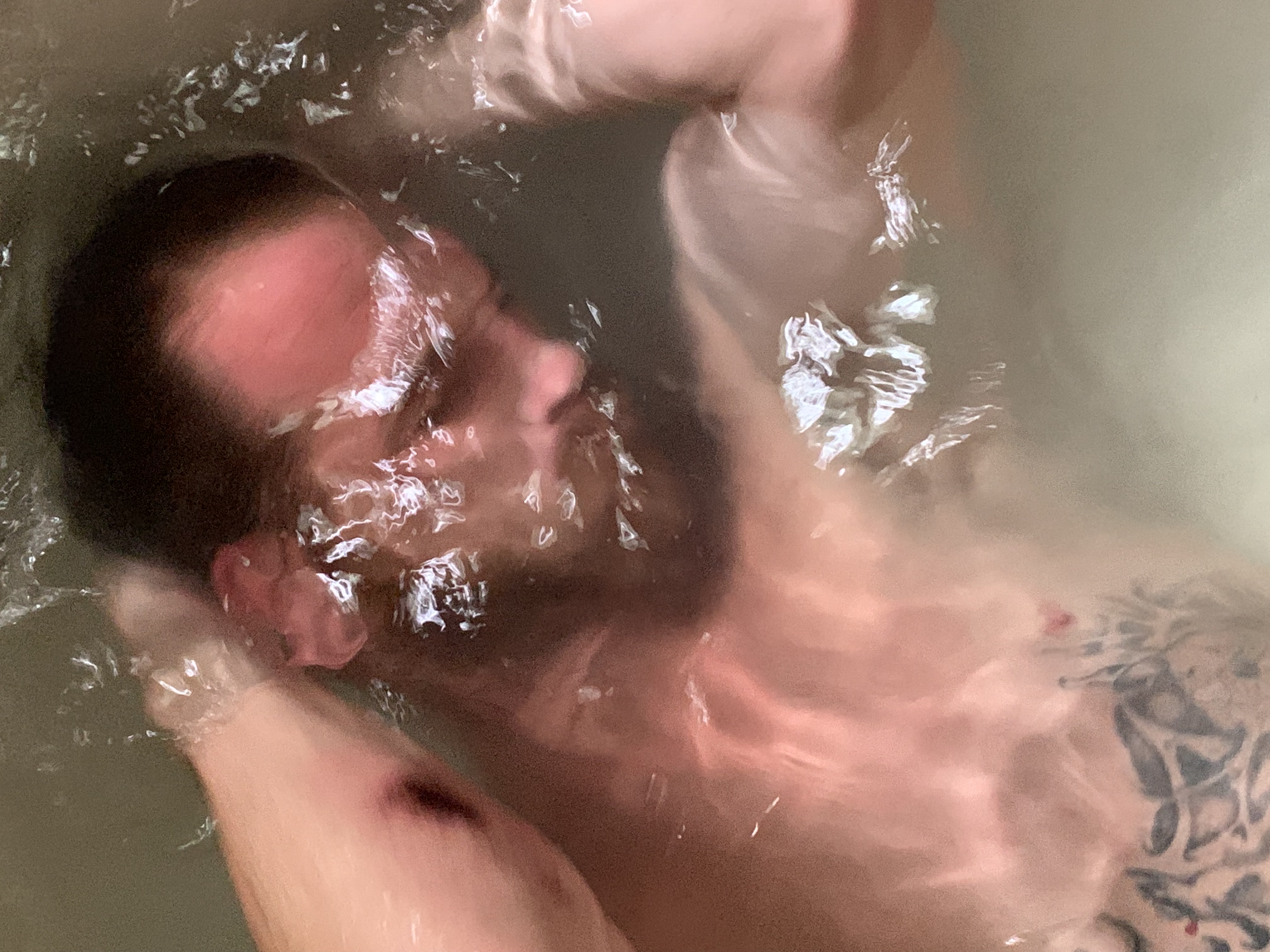
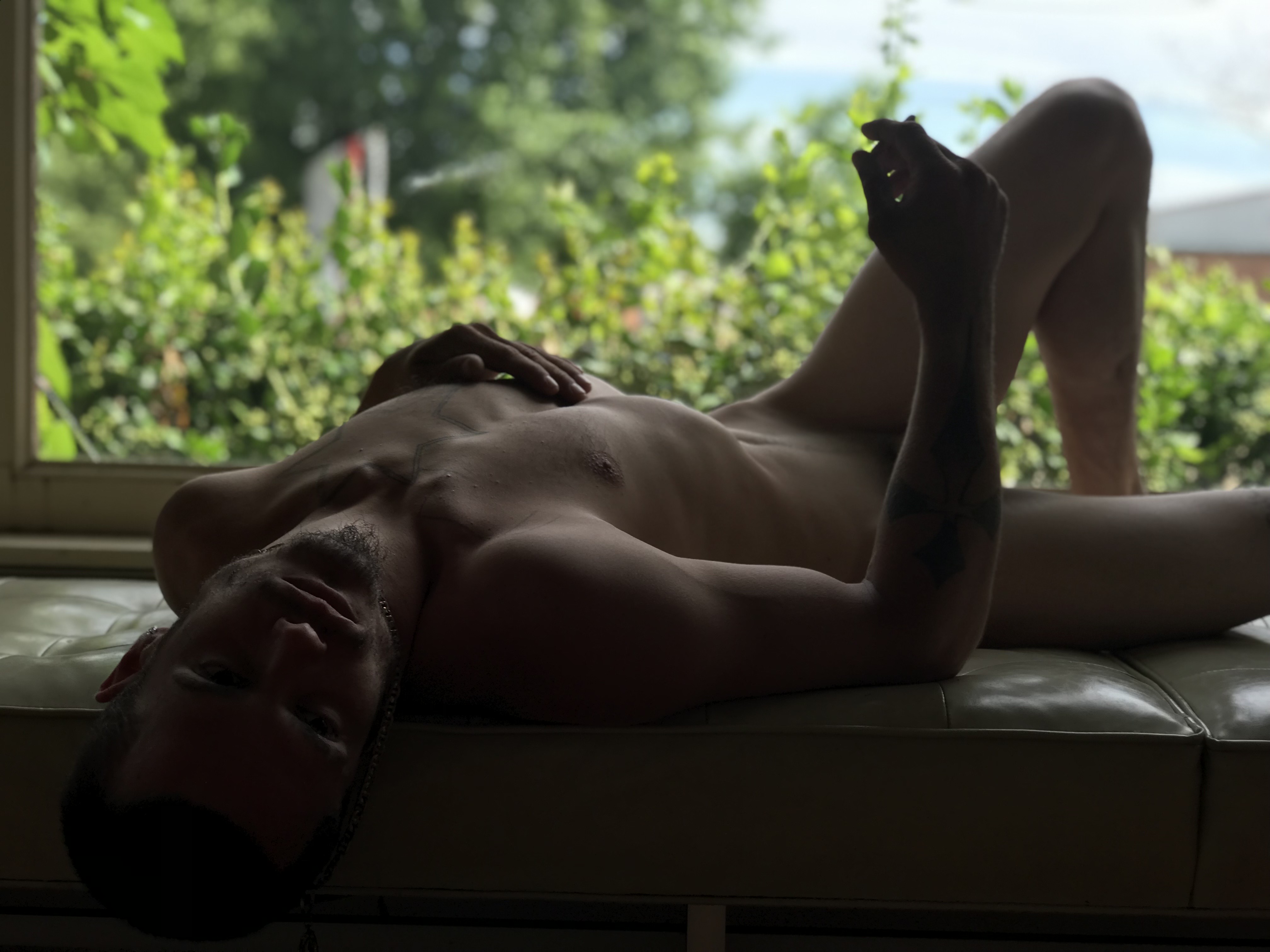
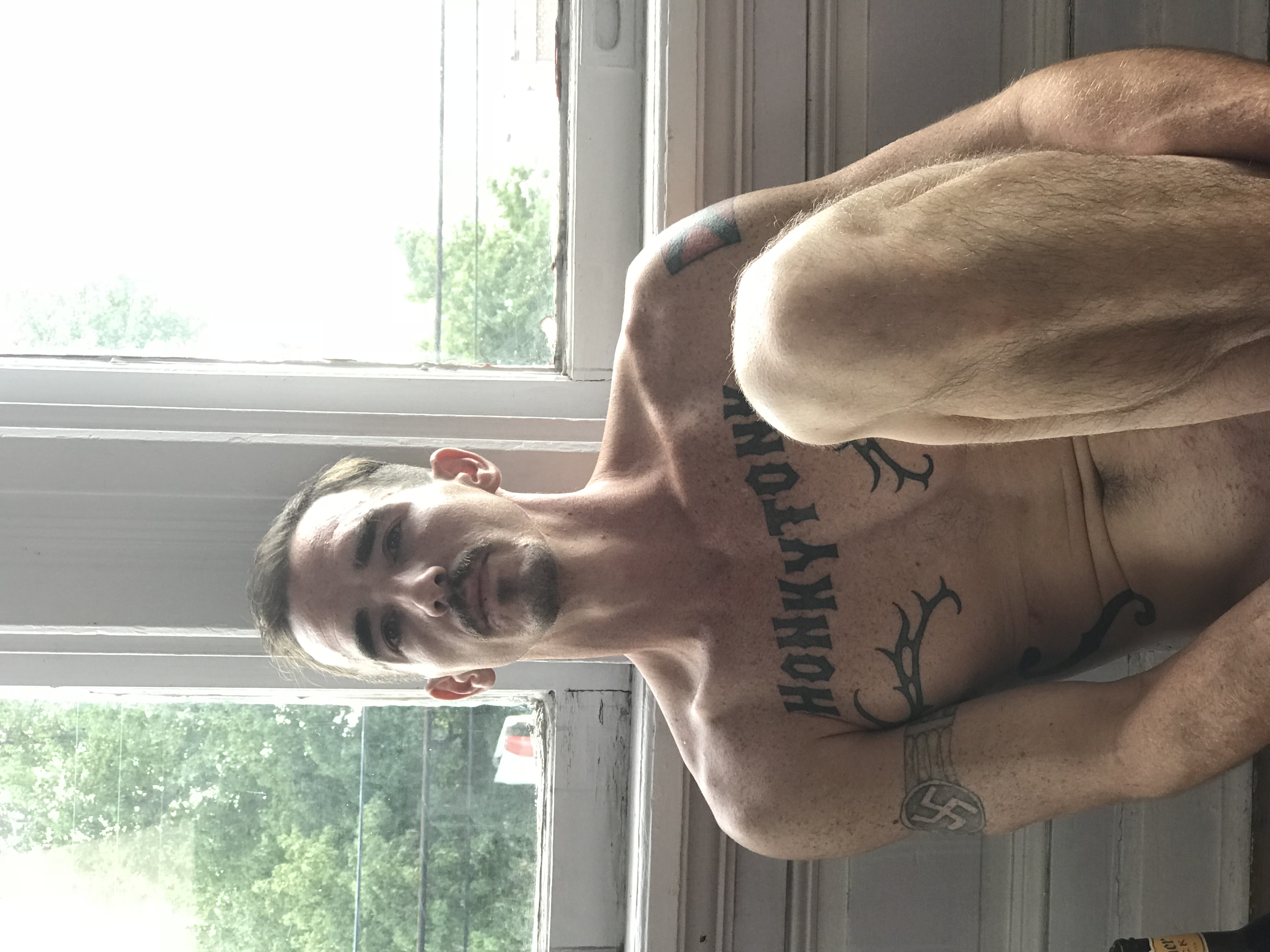
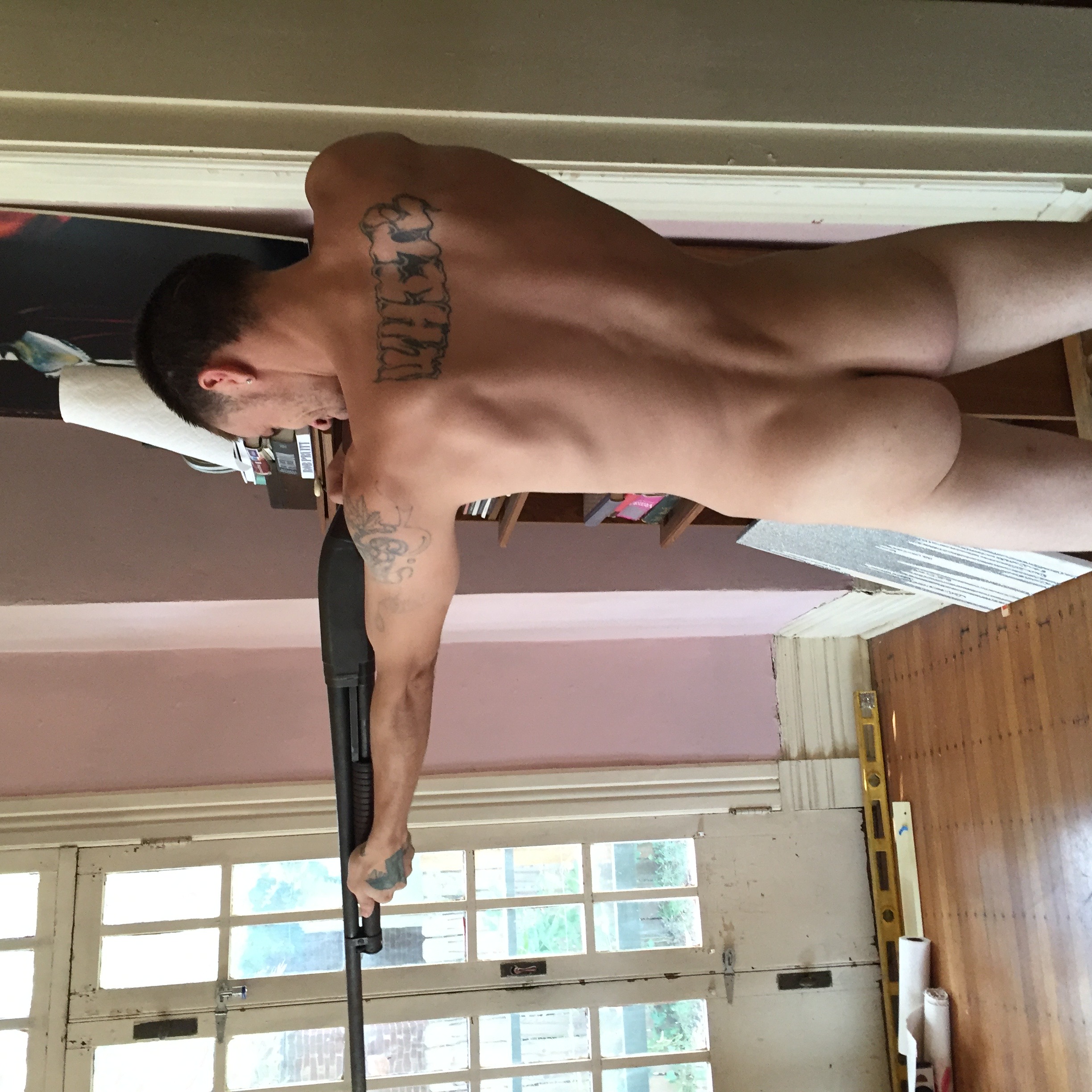
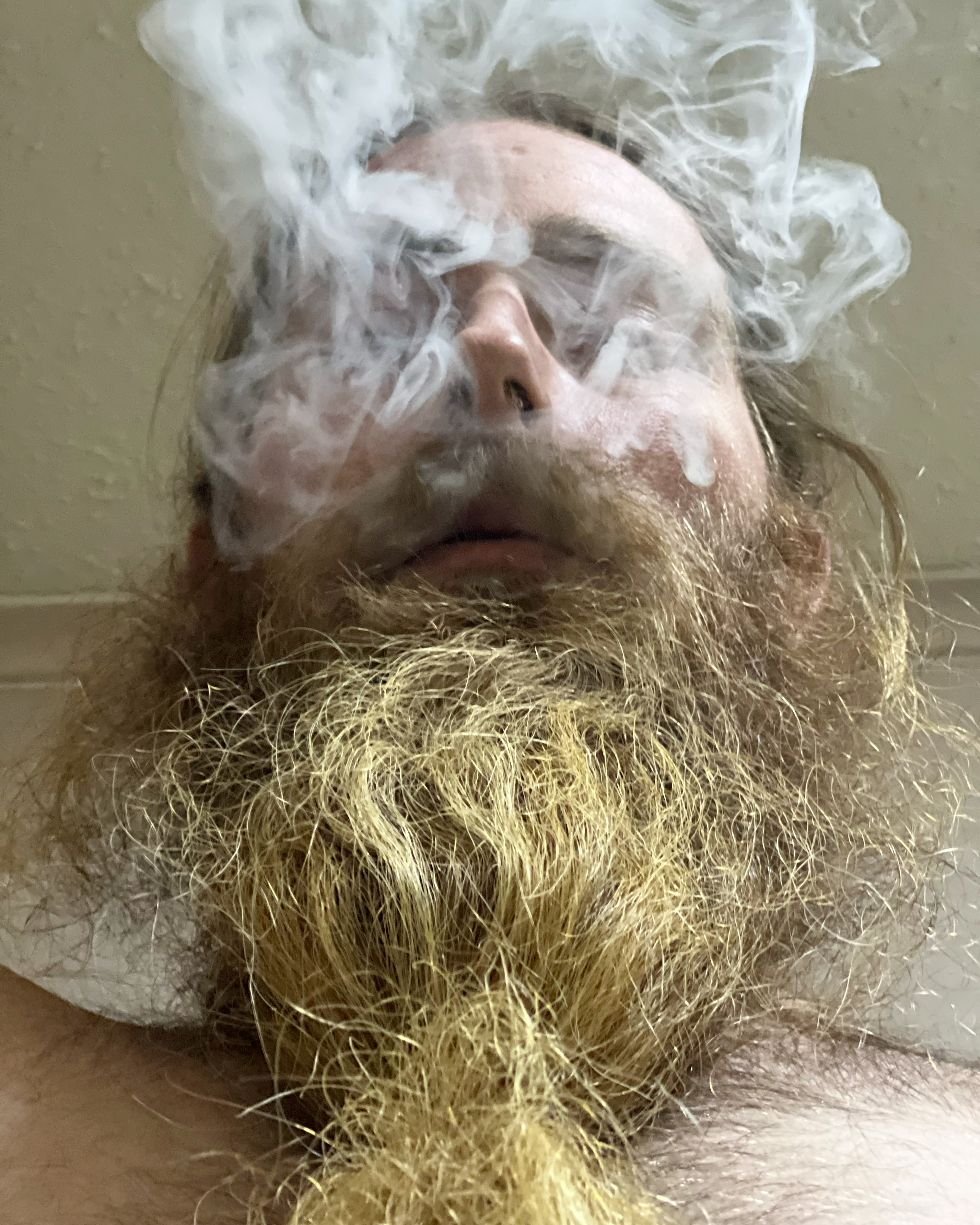
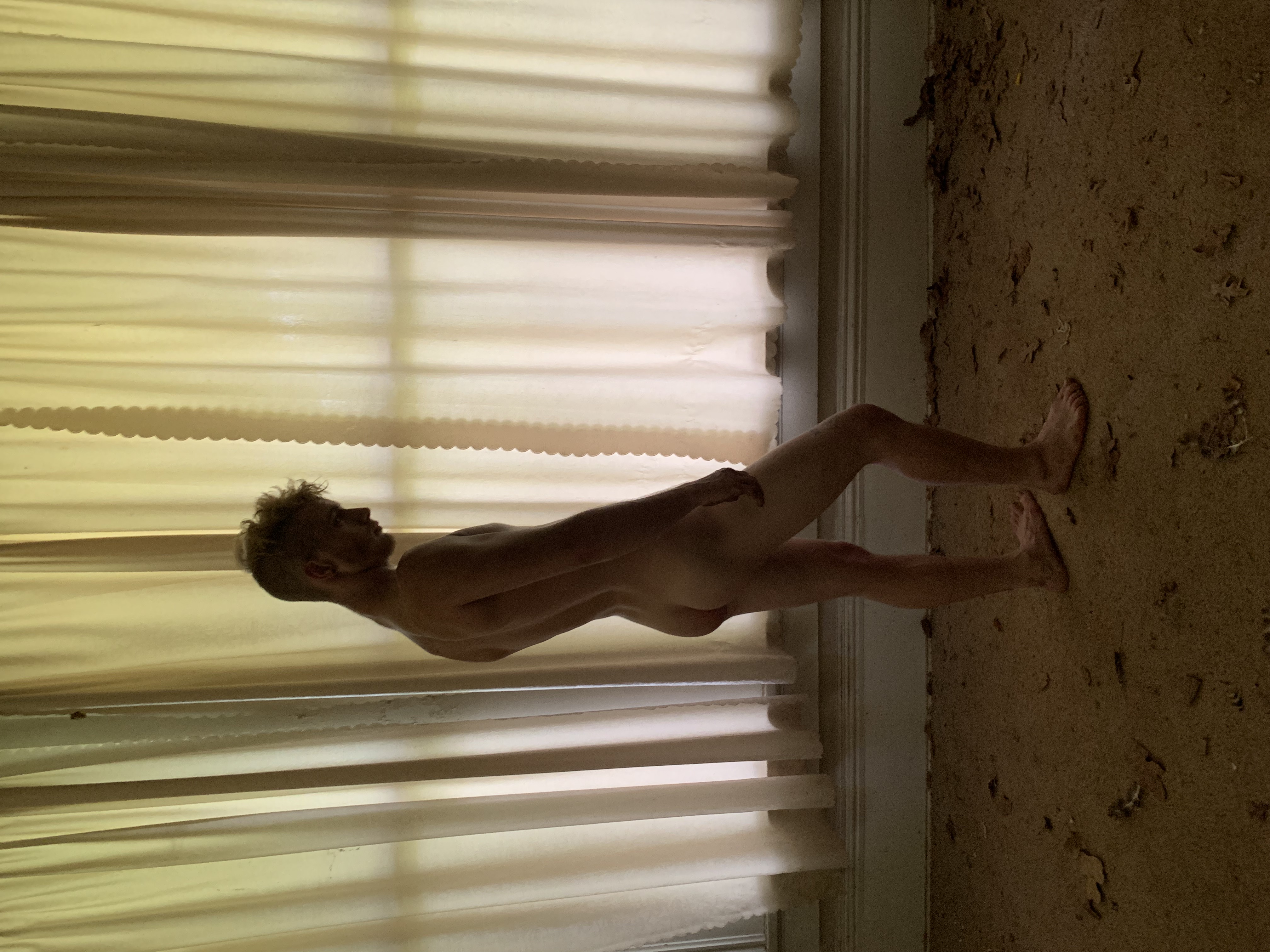
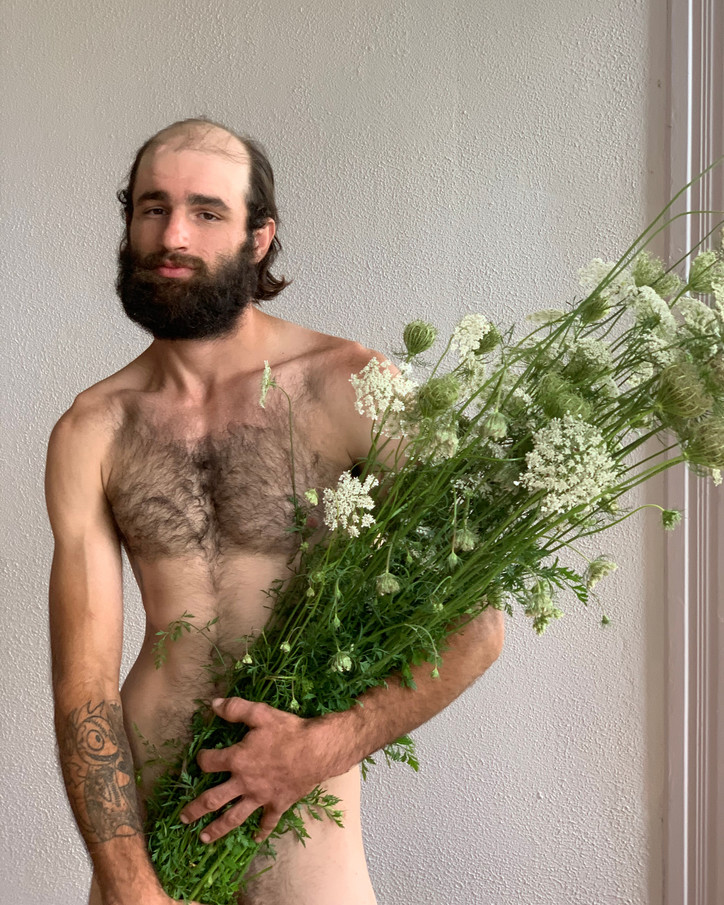
Having grown up in a place where masculinity was rigidly defined and often weaponized, how do you think your Texan roots shaped not only your artistic lens but also your understanding of the men you document in Shirttail Kin? Does the work, in a sense, reflect your own reconciliation with that past?
Well, when I was a child I actually developed a terrible fear of men and boys, so severe that I actually had a therapist who wrote a note to the school that I could not take boys’ phys ed so I was transferred through junior high as a girl for a few years, which was very confusing for everybody but me. I couldn’t step into the boys’ locker room without having a meltdown.
I grew up around rednecks and had this terrible fear and fascination for them. And erotic fixation, which I didn’t discover until later on. I still live in the country north of Dallas, and that’s still how everybody here is.
America is witnessing a crisis of masculinity right now, which has been growing since the women’s movement and the gay rights movement. There’s this hysteria amongst the right over men who dress in drag that it’s some kind of humiliation ritual. I wanted to look at old-fashioned masculinity with a fresh set of eyes. What I found here is that these men are really wearing their own king of drag, clinging to their own understanding of masculinity. That was very interesting to me.
There’s a long history of photographers who have looked at cowboy archetypes, like Danny Lyons and Larry Clark, but I feel like that archetype’s dated now — it’s not as relevant. There aren’t any real cowboys anymore; it’s been reduced to an aesthetic. If the cowboy archetype represented rugged individualism, then what it’s become, if it’s the image of the redneck, is a deplorable person, racist, homophobic, all of the above.
I wanted to show the humanity in these guys. It’s funny, originally I didn’t want to call the show “Shirttail Kin.” A friend of mine said that I should call it “We Found Love in a Hopeless Place.”
Given the often deeply ingrained societal norms around masculinity that exist, especially in the rural South, how do you see their lived experiences reflecting broader cultural narratives in America today?
What people don't realize is that the living conditions are often way worse than you could imagine. You can’t imagine the environments some of my models grew up in. There’s one whose parents abandoned him in a house when he was 12, and he kept living there alone, with nowhere else to go. He had neighbors who would bring him food occasionally. Some had it way worse. And of course, they grow up filled with so much rage and anger, but also fear, so many of them are terrified. It's absolutely like witnessing the return of the repressed.
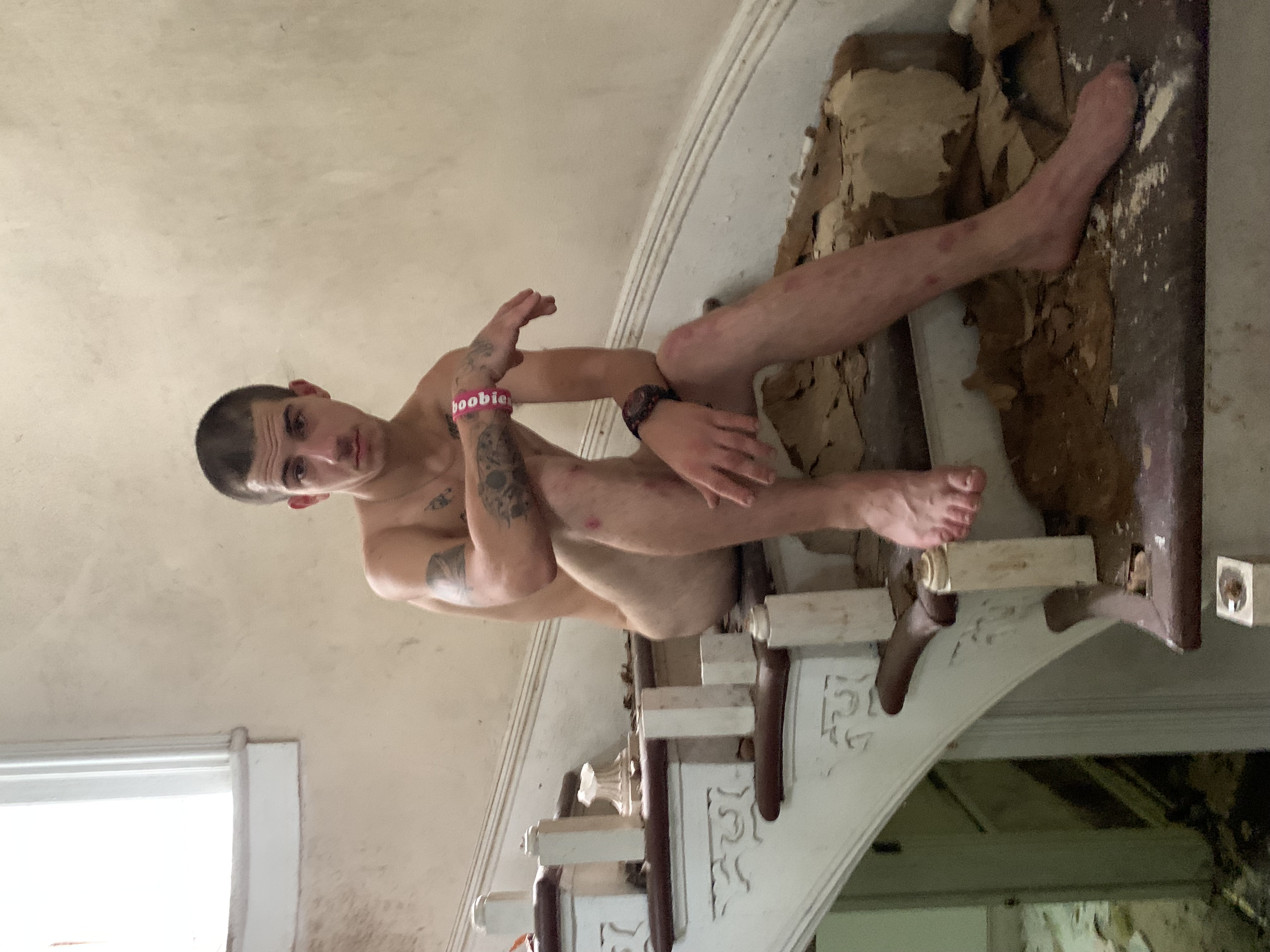
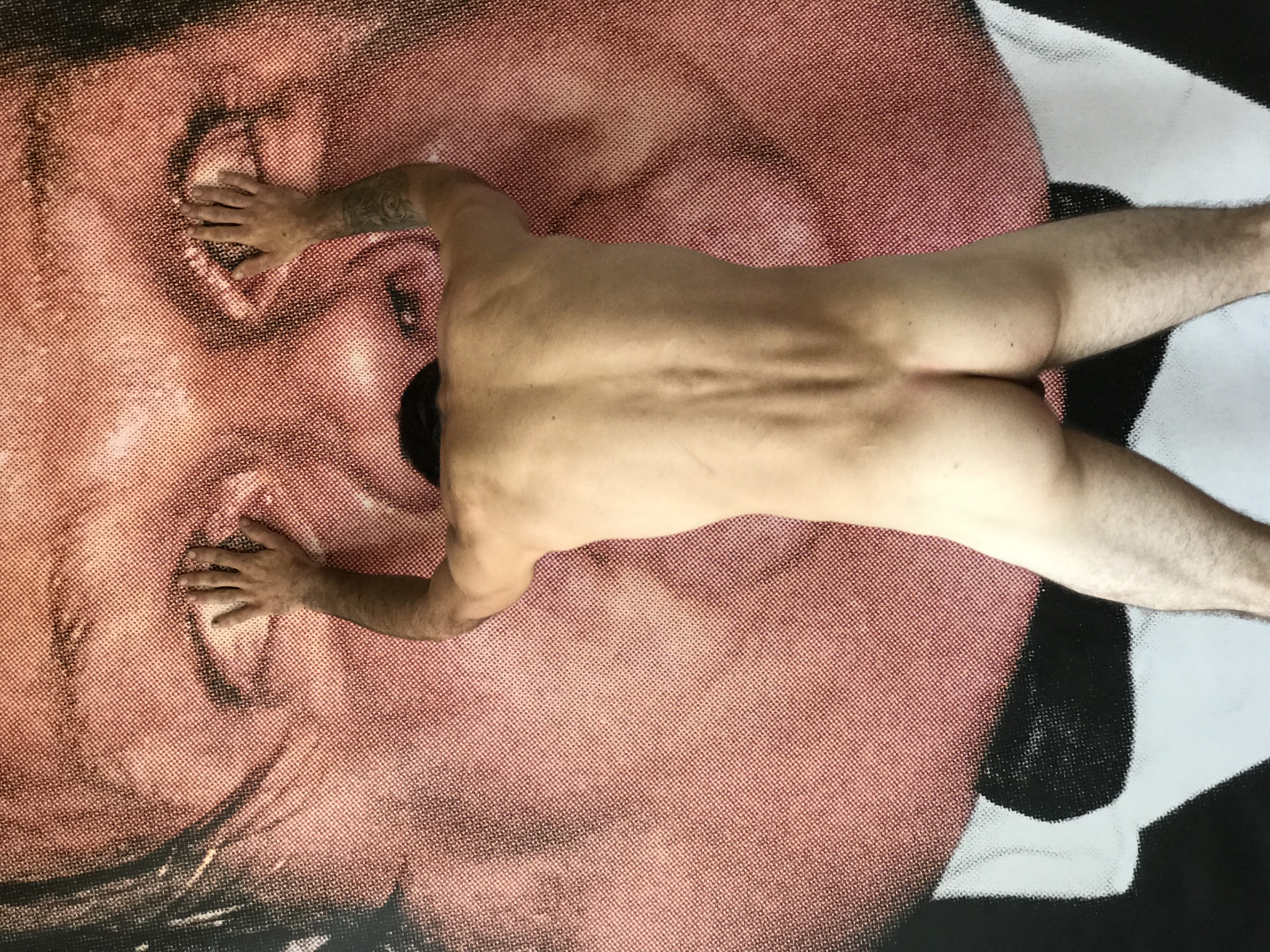
Chivas Clem, Coty in the Bathtub after Breaking In, 2021. Courtesy of the artist and Dallas Contemporary.
Chivas Clem, Cole in front of Chris Farley, 2019. Courtesy of the artist and Dallas Contemporary.
One image that stands out is the boy sitting on the staircase — there’s an almost haunting innocence in his gaze. What drew you to him in the first place?
That kid is the most sensitive. He's actually in prison right now. The reason that I met him was because he broke into my house when I was out of town. I came back and I found him in the bathtub asleep, just taking a bath. He has the kind of face that could haunt you for a thousand years.
Do you believe that, in many ways, the men you photograph are shaped by their environments — almost as if they are instruments of their own fate?
God, an instrument of your own fate. I never really thought about that, but you’re exactly right. Those are powerful words. A lot of these men are victims of their circumstances. They grow up without access to anything. I would say 60 to 70% of them are virtually illiterate, and there’s such naivety and innocence to them.
Do you find that this innocence or naivety gives them a different kind of wisdom or perspective?
There’s an interview from the ‘60s with Pasolini, and the interviewer asks, “Who are your favorite people?” And Pasolini’s response implied an admiration for the uneducated because they aren’t spoiled by petty-bourgeois ideals. It’s the same with Jean Genet, who was fascinated by criminals, viewing them as figures of innocence. He said something like, “The criminal organizes a disordered world for us.”
Given the transient and often isolated nature of the men you work with, is there a sense of camaraderie among them?
That's an interesting question. I would say that most of them are quite feral, like lone wolves, because they were never parented correctly or taught about what it means to be loved. They see relationships as transactional. They might develop a bond with somebody but it’s often fleeting. They might have to go to prison for two years, then that person finds somebody else.
If you’re barely surviving, I think it’s very difficult to create any genuine bonds. I have models that have girlfriends, but the relationships never last. And it’s always transactional. She has a check, a place to stay, or he gets a check and she stays with him. When I first started doing this, one of my models went to prison and I sent him a care package. He called me crying, and this is not somebody who cries. He said that he’d never had someone do something so nice for him in his entire life — that his mother would never. And she probably just can’t afford to.
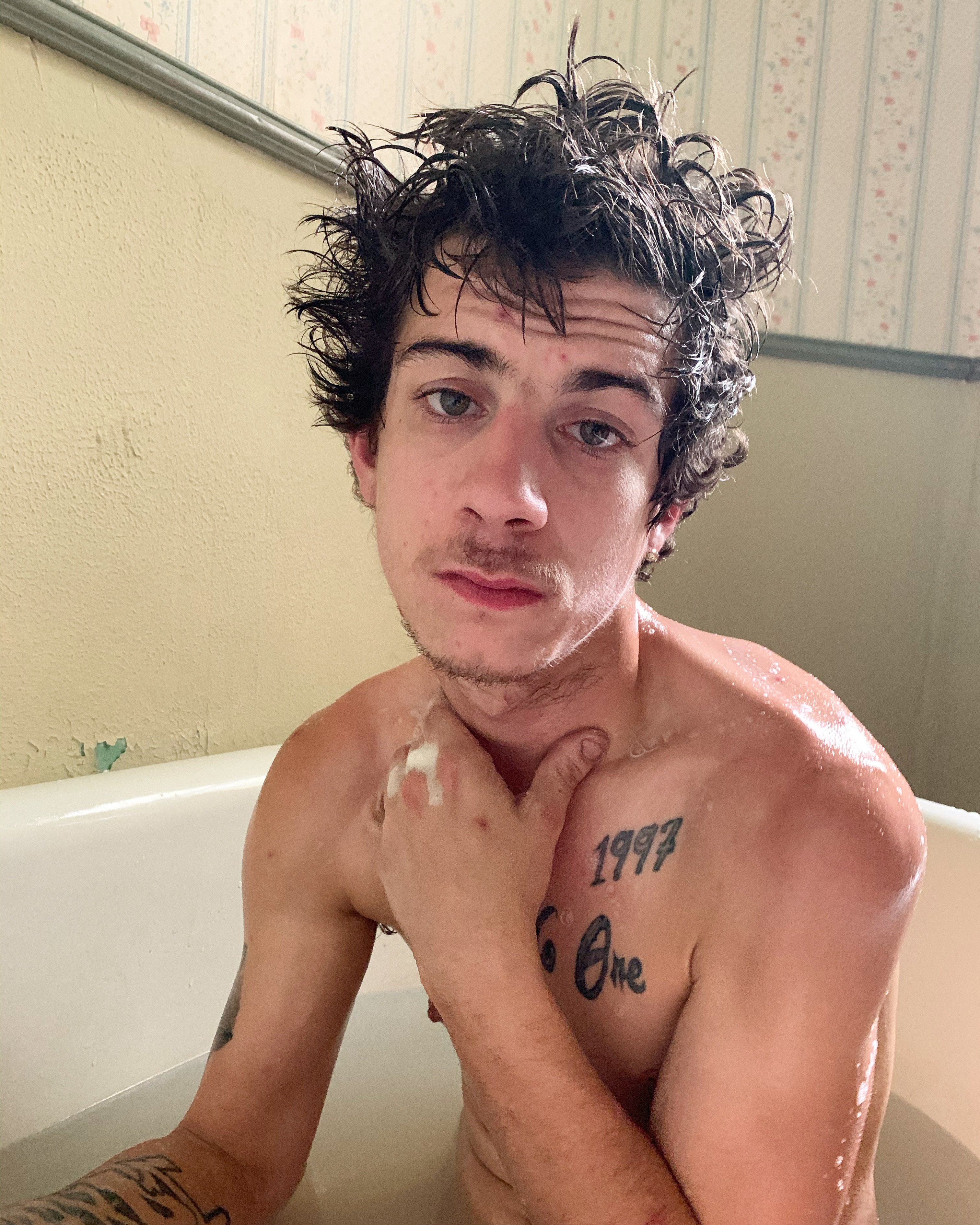
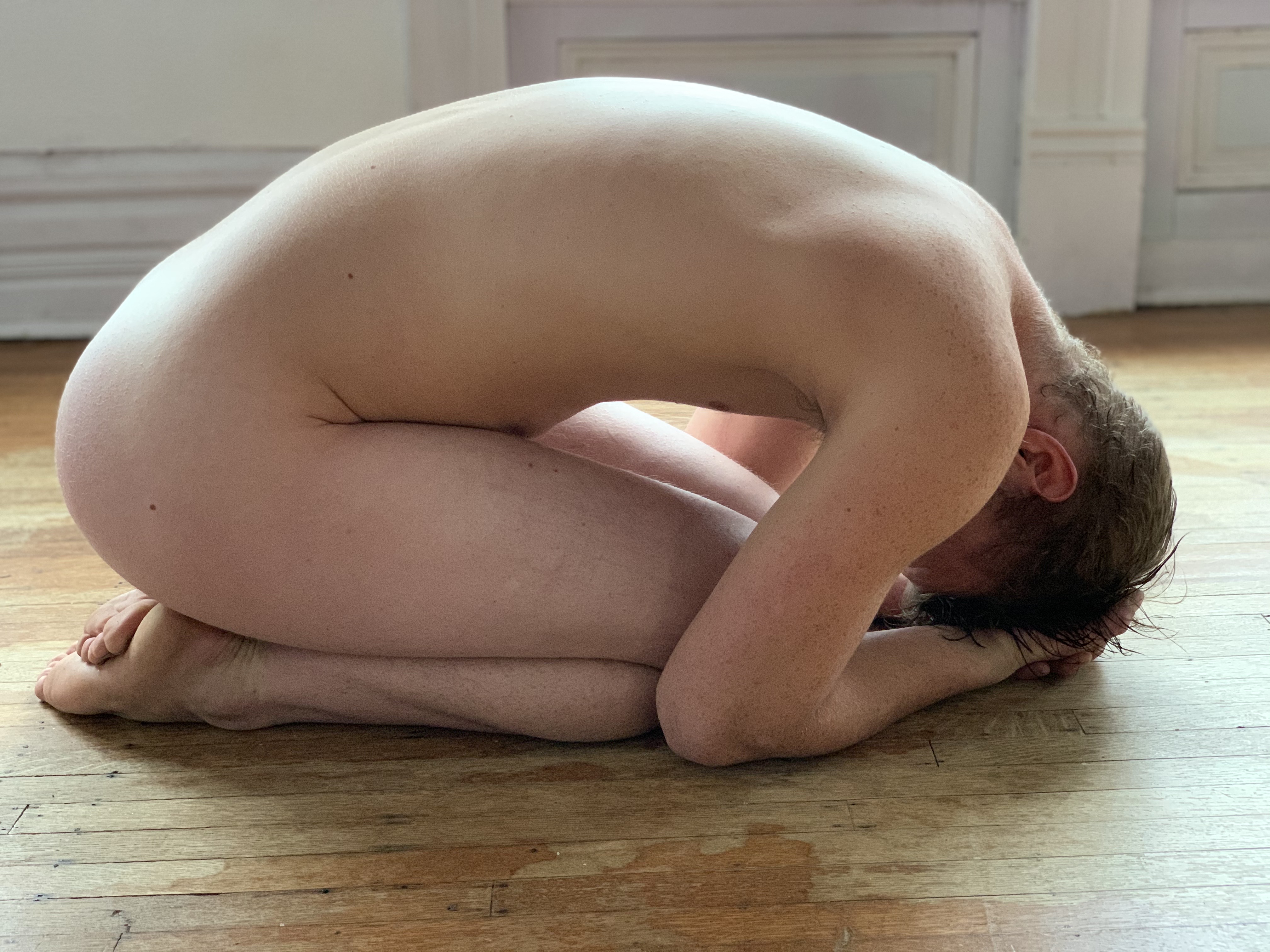

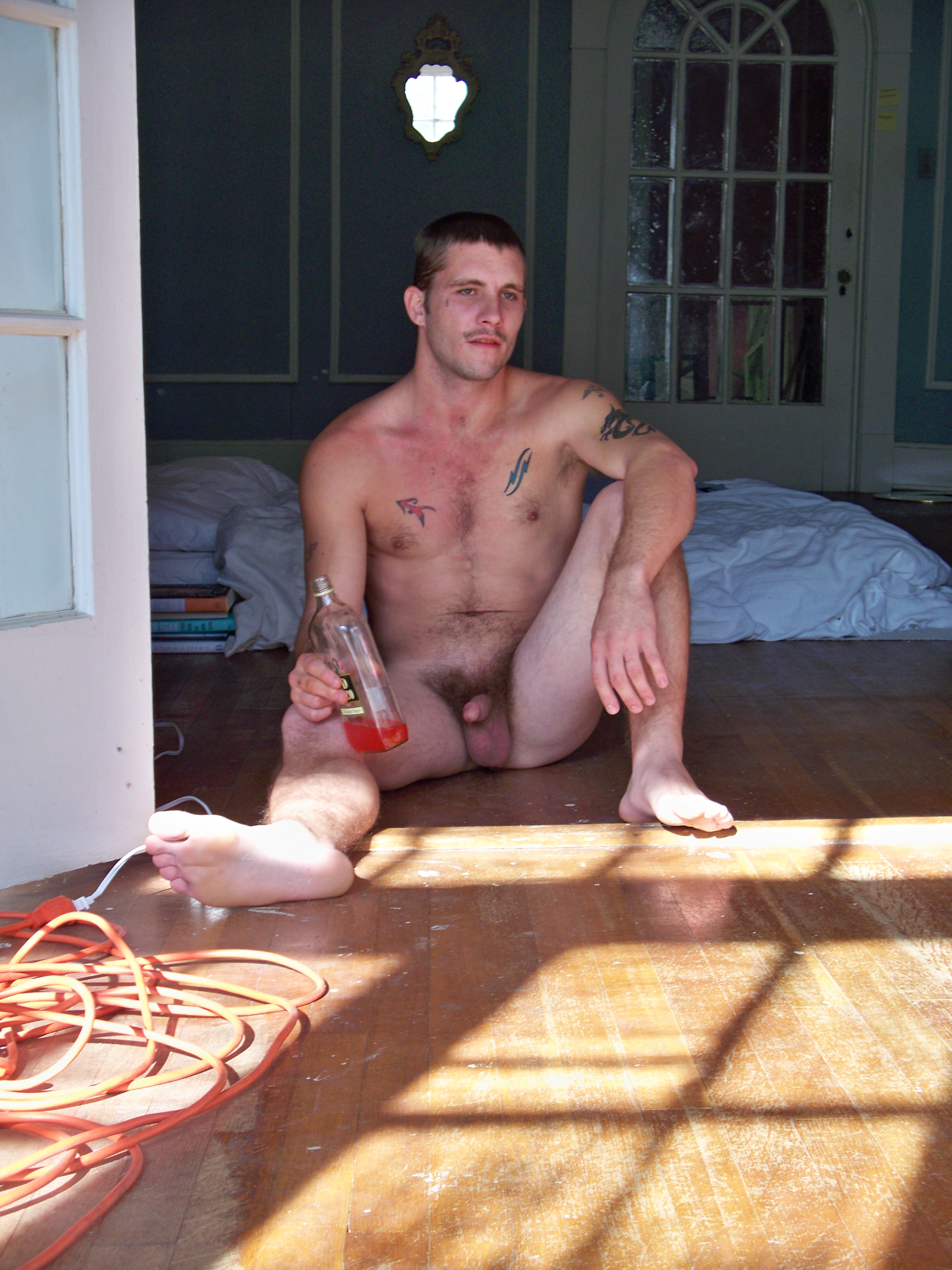

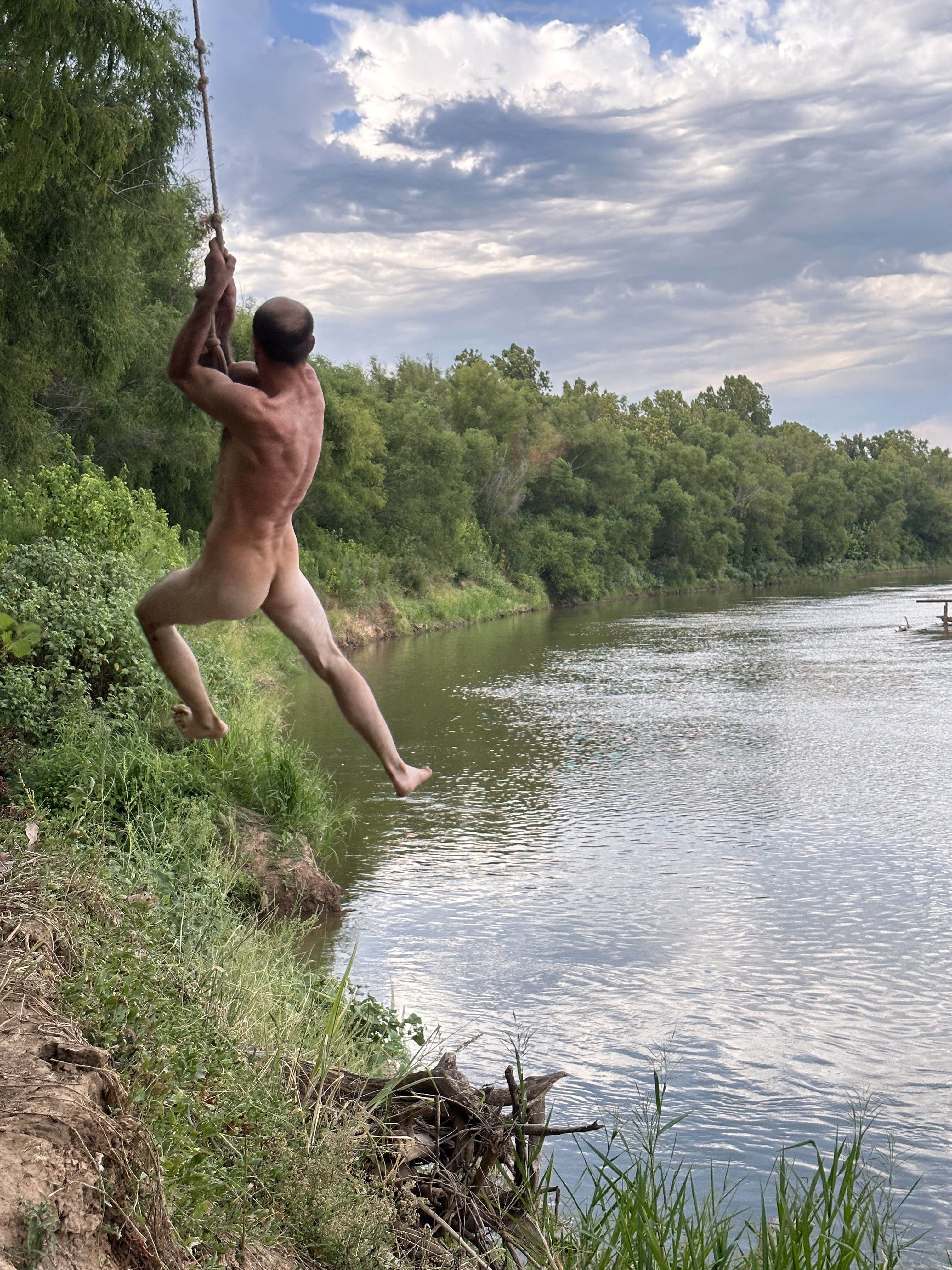
Would you say your approach is driven more by instinct or is there a method to the scenes? How do you balance spontaneity with intention in your work?
It's all instinctual. There's no real method to it at all. Everything is very much by chance. I never plan to meet the guys I do. When I first moved back here, I was driving to my studio one day and there was a guy on the side of the road in tight white jeans, a white t-shirt, and a white cap with headphones on, moving to the beat of the music. It was so cinematic, like something out of Saturday Night Fever. He became my first model.
Photographing these men — who in some ways represent the very figures you feared growing up — have you found a new understanding of your childhood phobia?
When I started photographing them, I realized that they were just as fearful as I was as a kid, but rather than becoming hysterical, they acted outward. I guess I learned that humanity is hard to recognize in light of our own fears and prejudices. The work is about finding humanity in a subculture that is perceived as so deeply dangerous. I mean the boogeyman of American culture right now is the redneck — the deplorable right. Yet, there’s also a deep sadness and vulnerability to this figure.
Addiction seems to lurk in the background of the lives you capture. How does the presence of drug use in the rural South inform the narratives you’re telling through your photography?
Absolutely. And there's so much despair. I mean, I was a junkie in New York, hooked on heroin. The reason that I moved back to Texas twenty years ago was to get sober and now I am. Here, people are primarily meth addicts, like crystal meth, which I think it’s way worse that opioids because it fucks with your brain chemistry in such a way. It’s very difficult to get sober from opioids, we know that, but you can, and get your head right again.
If you’ve been doing crystal meth for 10 years and get sober, I don’t know if your brain ever really recovers. A lot of these guys grew up not just impoverished and plagued by domestic abuse, but also with terrible, terrible intergenerational addiction. There’s an entire generation of kids affected by their parents’ drug use. It’s a fucking horror show really, another kind of darkness.
Like alcoholism, but worse?
Much worse. I do have a model whose mother drank while she was pregnant, and he has fetal alcohol syndrome. He kind of escaped the worst of it, but he has all these learning delays, despite being so bright and full of ideas.
Another guy who modeled for me is an incredible poet. He wrote poetry all through his jail term in Oklahoma, and he writes music — he plays the banjo and the fiddle. Under different circumstances, this guy would’ve gone to NYU and had a recording contract. He works a shitty job roofing, but he’s completely committed — he has like 30 volumes of poetry written. But he doesn’t understand how getting any of it published or recognized works.
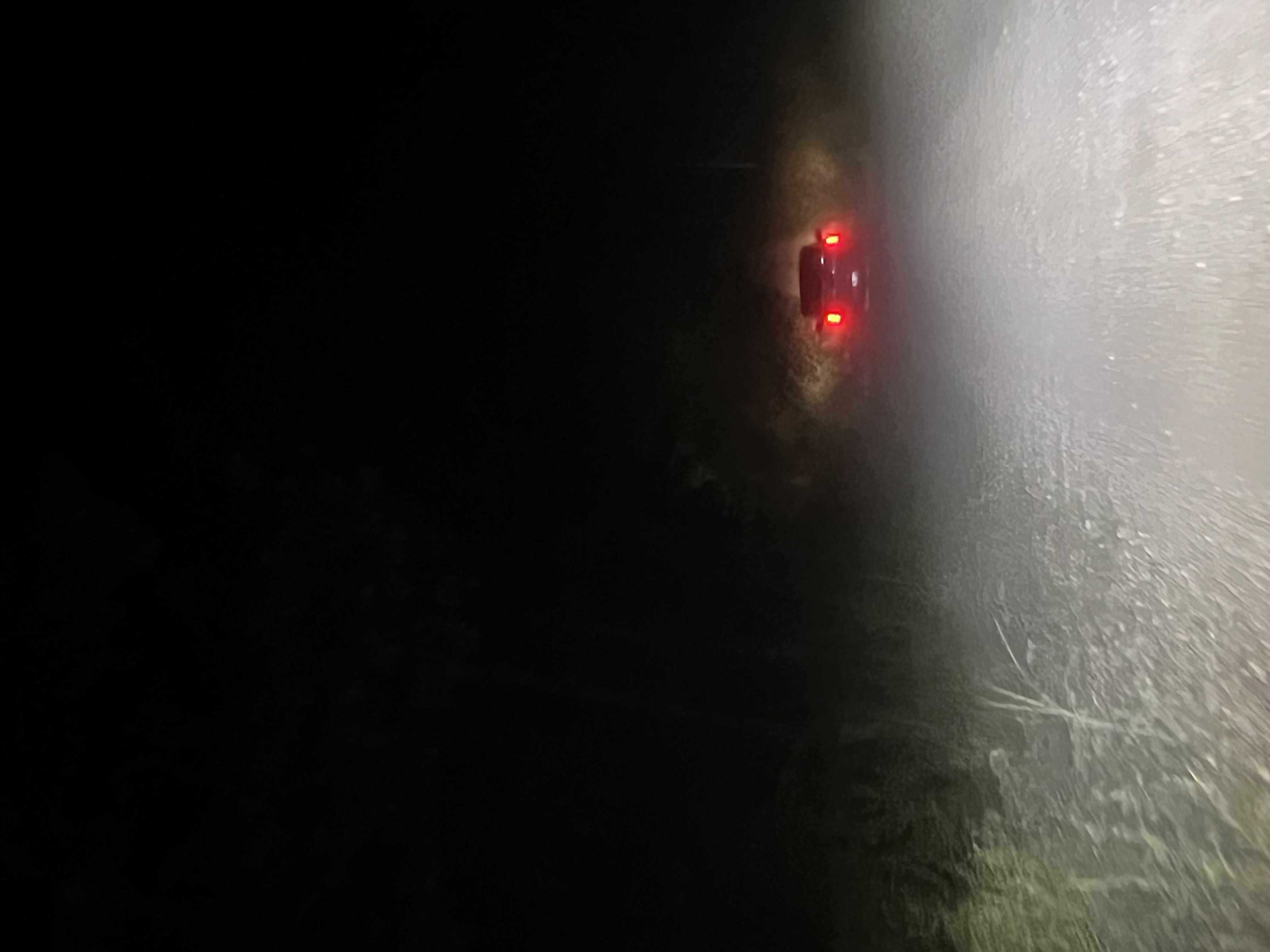
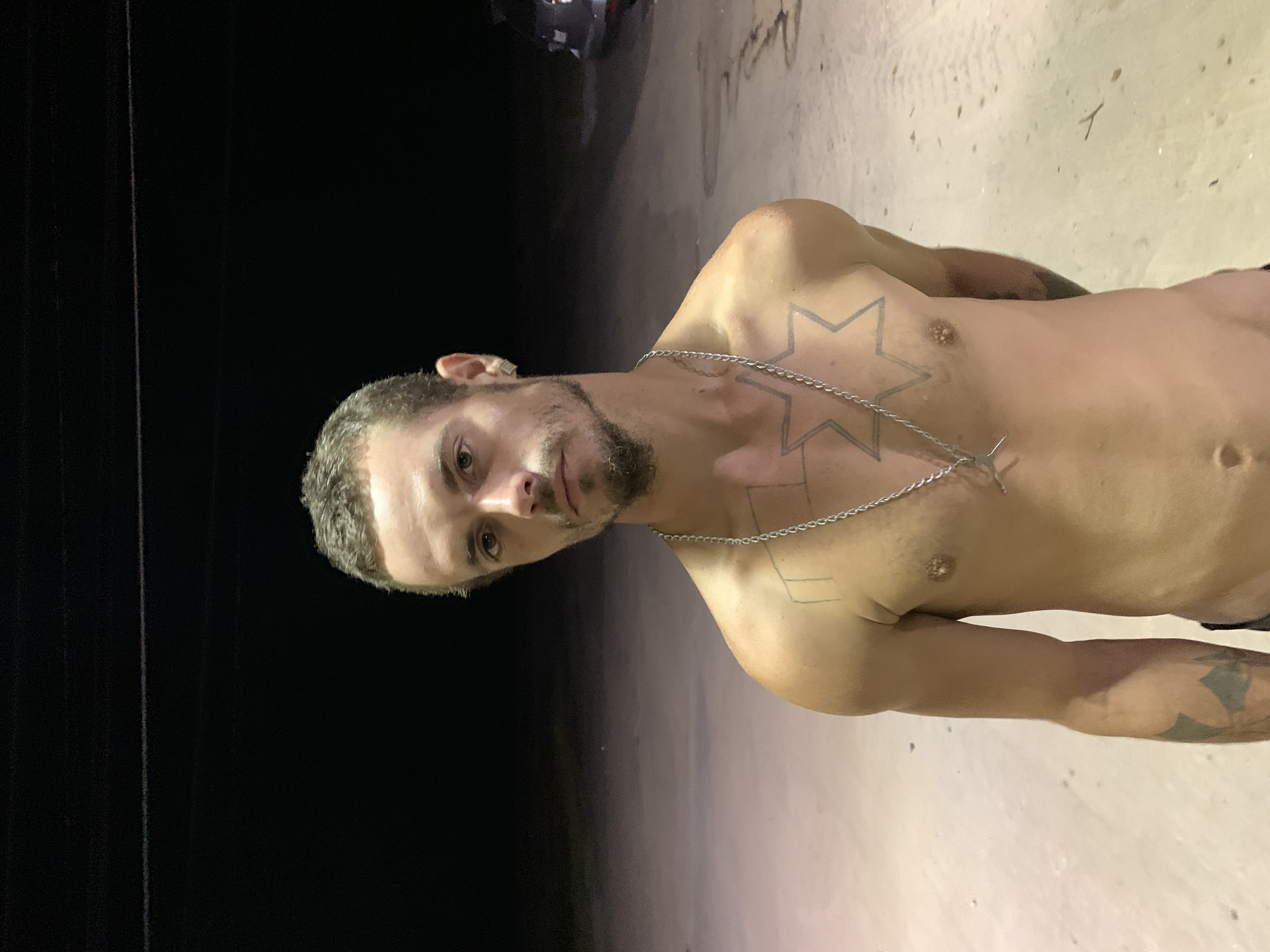
Chivas Clem, Dillon at the carwash, Night, 2020. Courtesy of the artist and Dallas Contemporary.
Much of the despair you describe seems to be rooted in a lack of access — whether it’s access to education, support, or even a path out of addiction. Do you think this lack of access, alongside the intergenerational struggles you capture, plays a central role in the stories your work tells?
Yeah, I mean it can get pretty dark down here, and I didn’t want that aspect to be overshadowed by — well, I was just reading a snippet somewhere about the work, and they immediately launched into this whole thing about queerness. I didn’t want the work to be coded in that way because none of the models identify as queer. That’s not to say that they don’t have sex with men, but that’s often transactional, and not the focus of the work.
Certainly, I’ve borrowed aesthetics from art history, like cheesecake photography, but I don’t think the work is exclusively about queerness.
Yeah, I don’t see that.
This writer called me the other day and was like, “Okay, so all of these guys are twinks.” And I was like, “What? No…”
[Laughs] I’m sorry.
That word has no real meaning here. That’s like a grand misreading, but I think that people see what they want to see through the lens of contemporary culture.
I wonder if any of the guys you’ve shot would know what a twink is.
They probably have no idea what a twink is. But yeah, you can’t control the reaction to what you put out into the world. I was reading something recently about when Larry Clark first made Tulsa. What was that, ’76 or something?
’71.
Shit. That's the year I was born. It’s interesting how mysterious that work was to people because nobody thought about addiction, the rural poor, or any of that. For a lot of his early shows, Larry exhibited alongside postmodernists like Richard Prince and Cady Noland. It wasn’t presented as photography. It was more off-the-wall than that — there was no sentimentality to it.
I wonder what the reactions to your work will be with the show being up so close to the election.
Well, the curator, Alison M. Gingeras — who is brilliant by the way — wanted the show to coincide with the election cycle because she felt that it would address the issue of Texas, which has become such a red state in recent years. Texas wasn't always a red state. I feel like we are really on a precipice, to be honest with you. People don’t understand just how dangerous things have gotten. The 2025 document that the Heritage Foundation put out is a recipe for fascism.
How has the community in Texas responded to the project?
Well, there really isn’t an art community here in Paris, Texas — it’s such a tiny town. And honestly, I don't show the work locally because it's often seen as homoerotic. When I show the work to my models, though, they all get kind of tickled by it. I think they like the idea of being seen, but they’ll sometimes say things like, “I just don’t want my grandmother to see it.” I always tell them I would never take a picture that I wouldn't show my own grandmother.
This will be the first time I’m showing the work in Texas, so it’ll be interesting to see what people think. People will probably code it, again, as homoerotic. It might be for them to see beyond that.

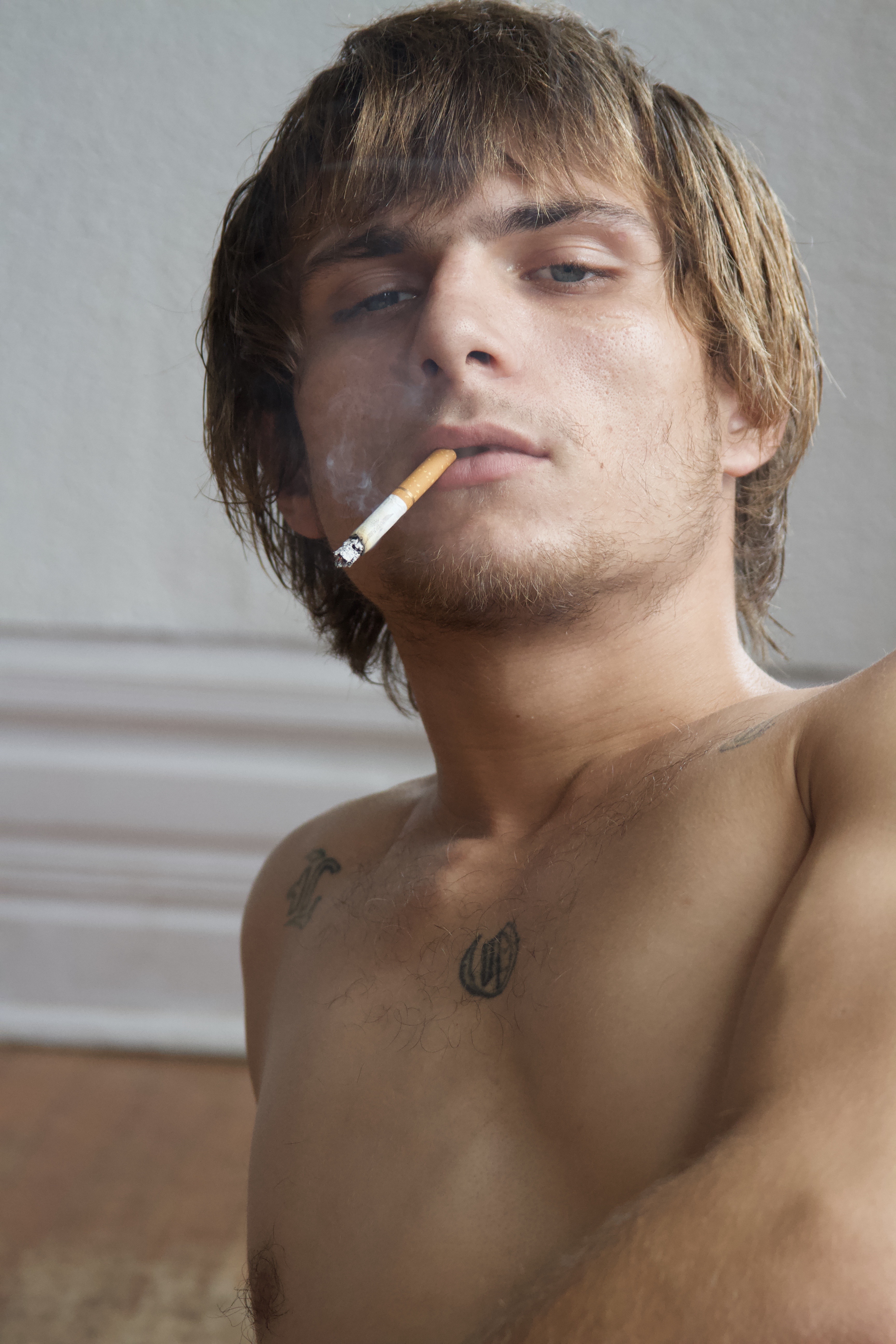
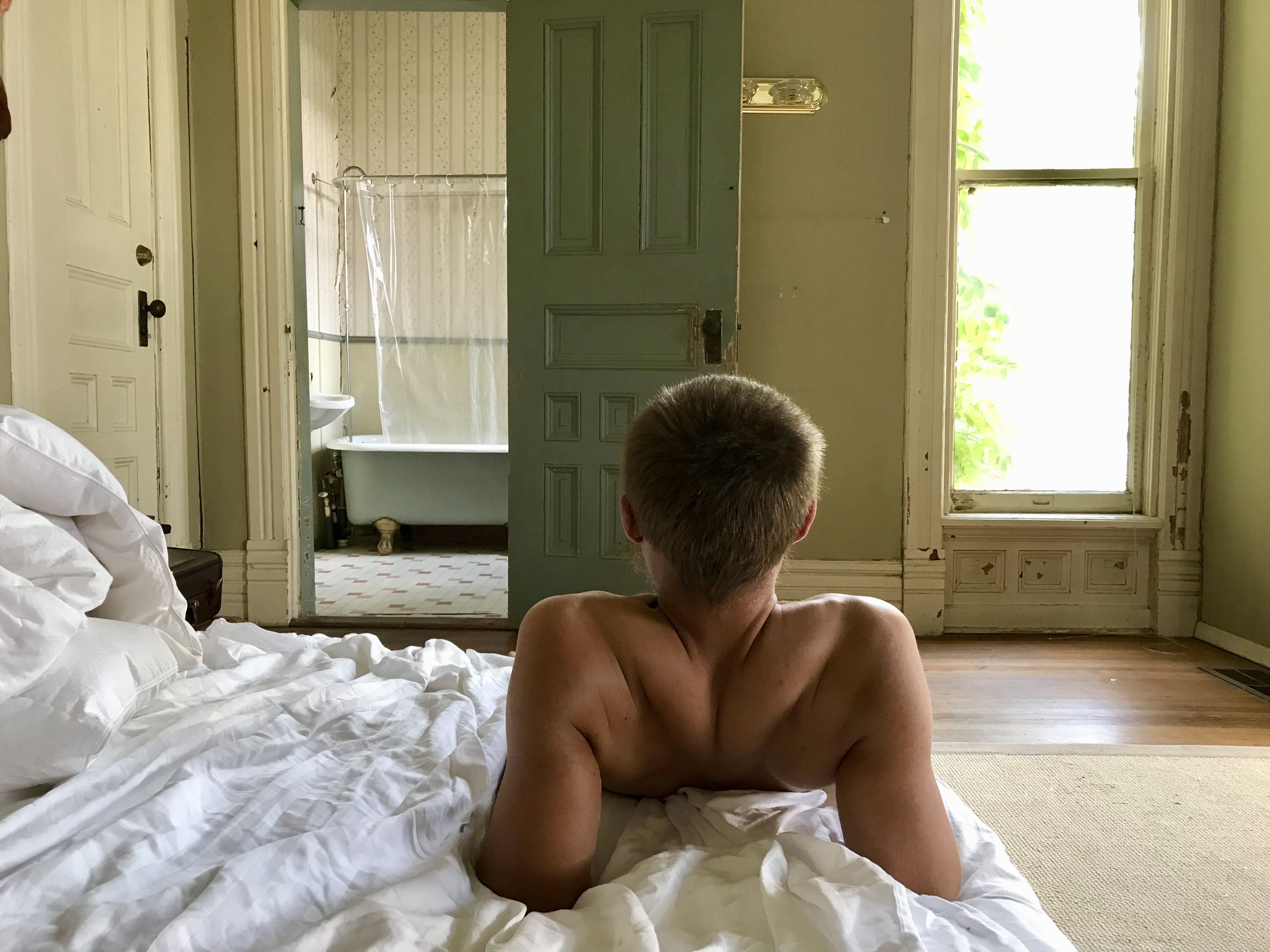
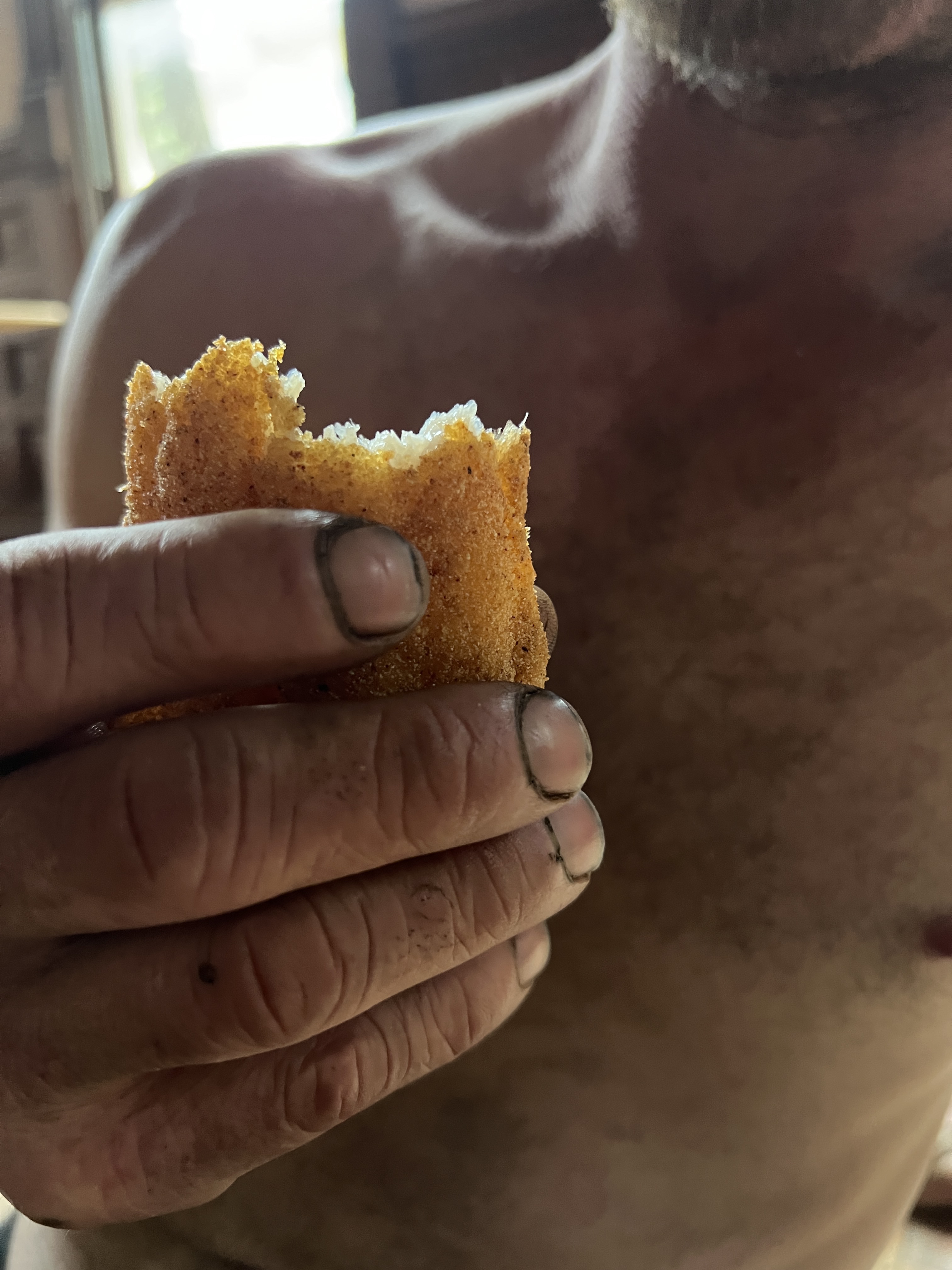
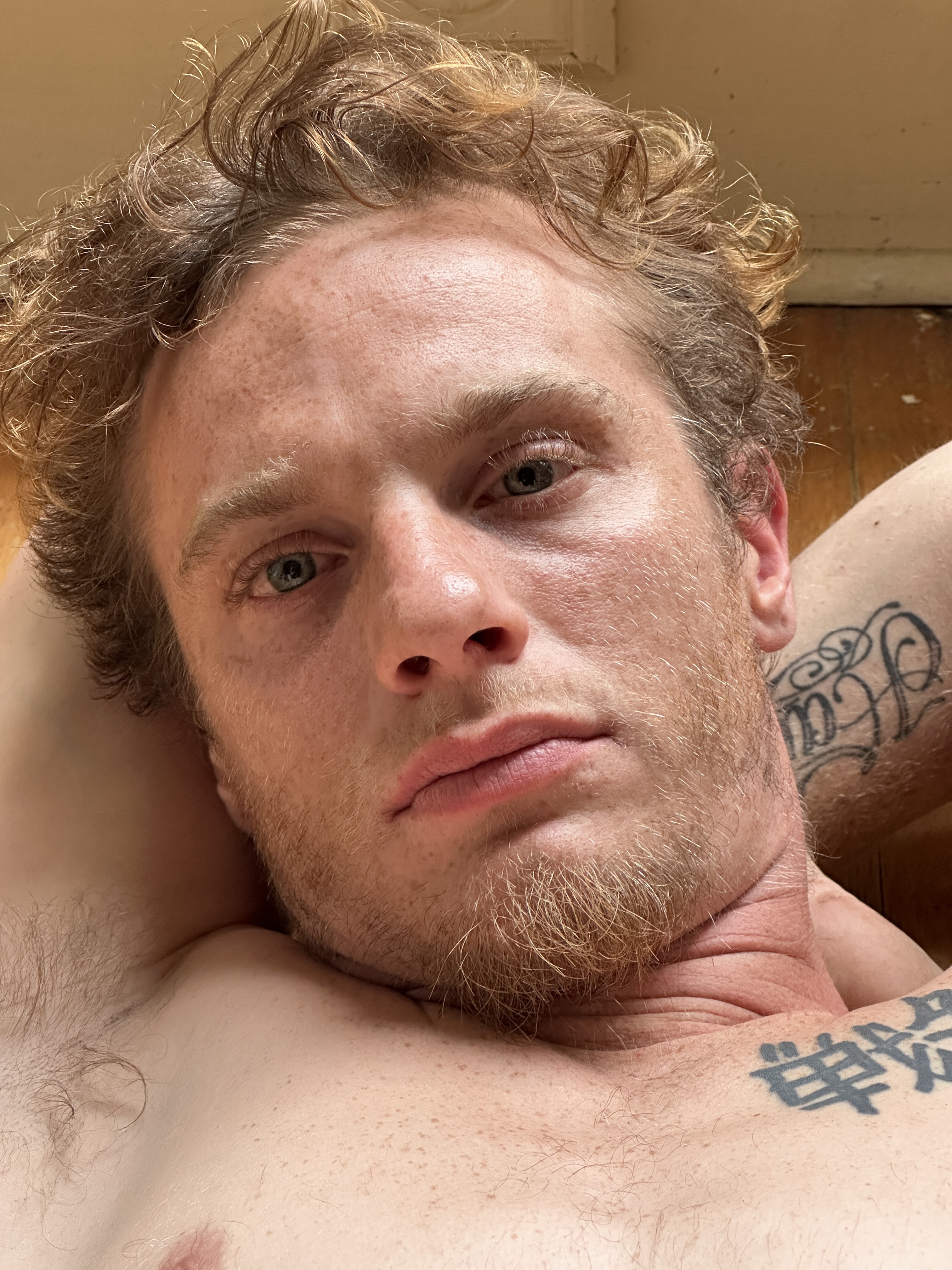

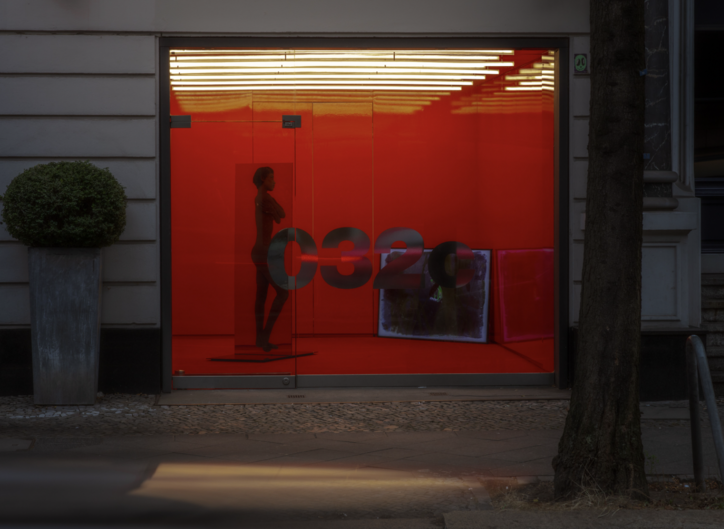
Berlin-based magazine 032c, which has long blurred the boundaries of a traditional publication with its extensive line of garments and apparel, launched a new, permanent, gallery space. Through its first show “Productive Narcissism,” artistic directors of the gallery Claire Koron Elat and Shelly Lea Reich insert themselves into Hugo’s ever-so-relevant dialect, challenging the contemporary conventions of a “publication” while addressing the self’s relation to re-invention.
In what ways will the gallery distinguish itself from the publication?
Claire Koron Elat— The gallery is part of the 032c universe. While the magazine is the nucleus of this universe, it expands into different realms – the ready-to-wear, residencies, exhibitions, and now the permanent gallery space. The gallery is an organic expansion, and at the same time, it questions the future of print publications. What are the alternatives to traditional ways of working in editorial? In our current state and time, flat images and digital are being highly prioritized; the gallery is also a response to that cultural shift.
Shelly Lea Reich— Our first show touched upon this topic of reinvention specifically, but it also reflects the publication and connection to redesign through the written word. We have worked with all of them in the past, which was a conscious decision to further and establish a long-term relationship with them. The gallery will be about establishing and furthering those connections, too.
You will be operating under a “semi-traditional model.” Could you define what this implies in practice?
CKE— It’s called semi-traditional because we want to start without a representation model: the gallery is officialy open and we have a running program, but we’re not yet representing any artists. It’s considered traditional because we have openly communicated that this is a commercial operation. We’re selling the art, and–while deeply interested in providing cultural value–we’re trying to make a profit.
But so is everybody, although desires of profit margins may differ. The business model under which art exists is hard to escape but easier to manipulate.
SLR— It is. And, in comparison to fashion, it’s something that the art world prefers not to talk about. Both Claire and I come from a background in the arts, meaning that we know the sensitivities in this scene, and how to address them with collectors.
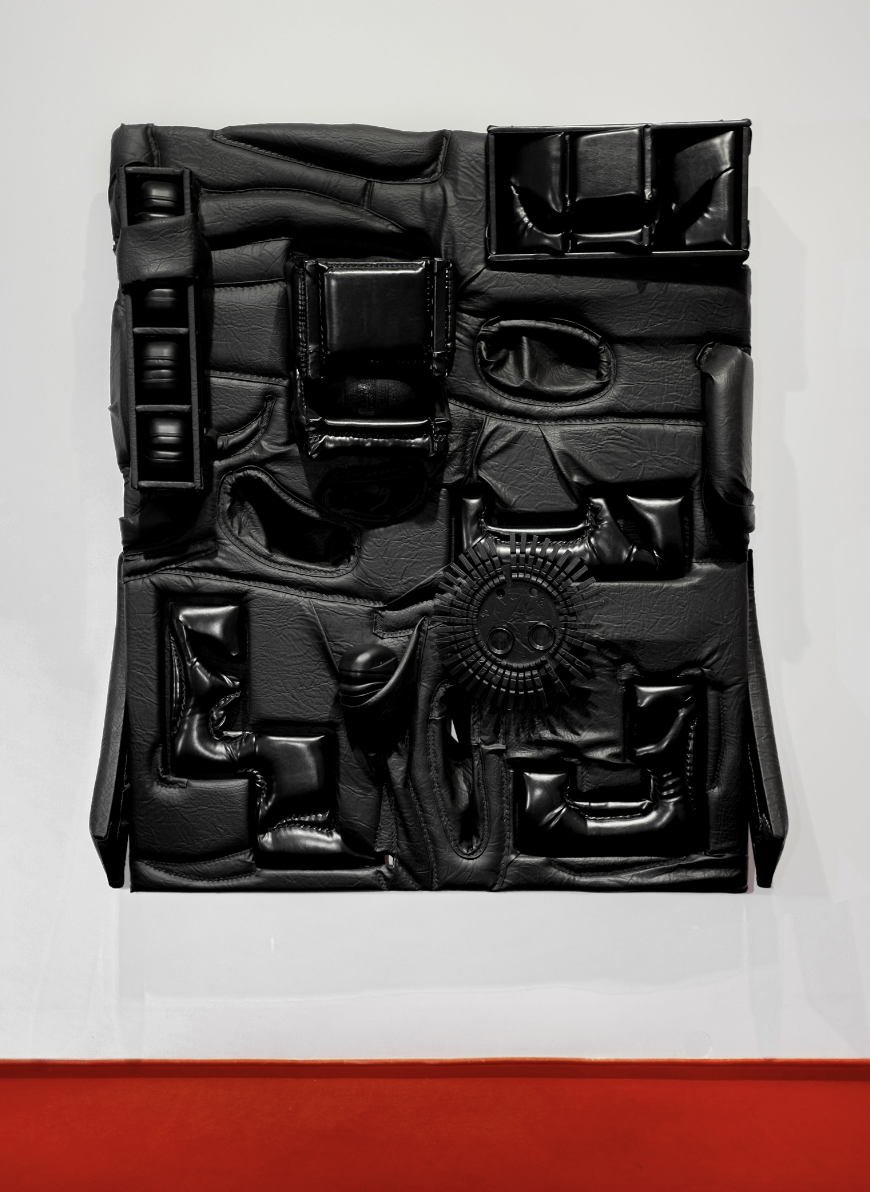
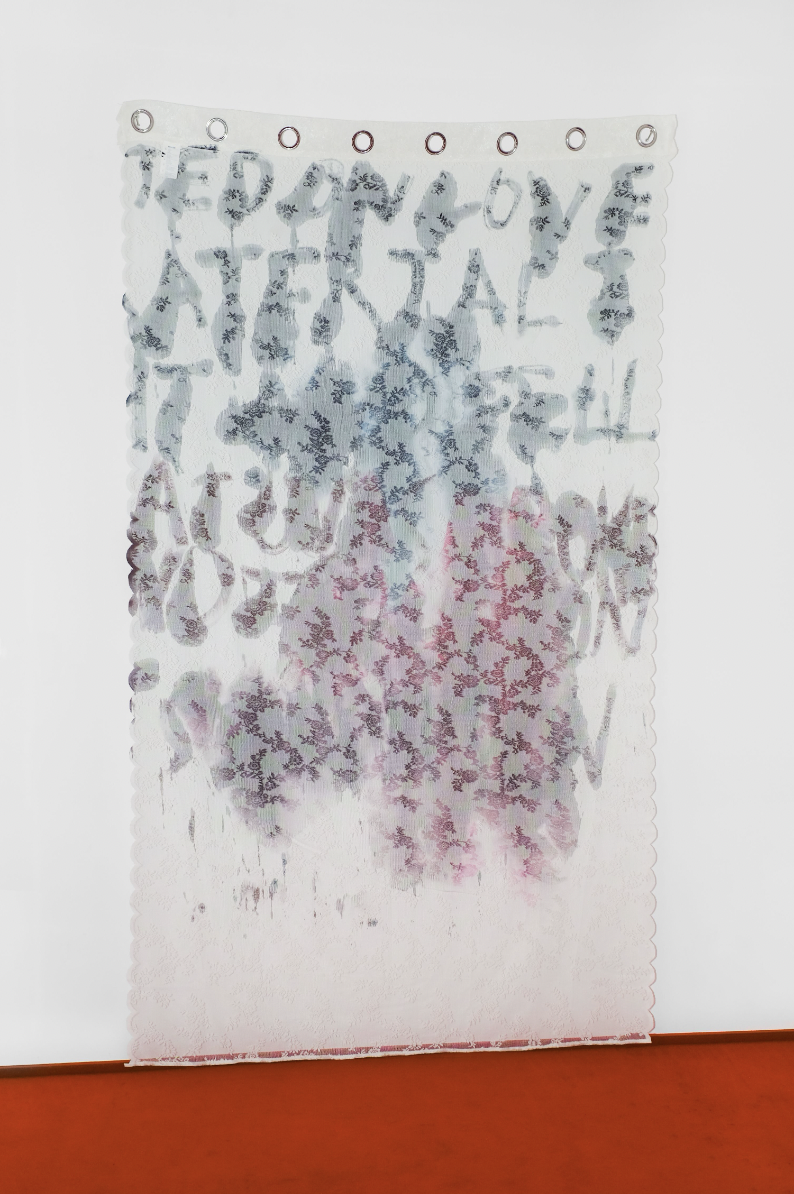
Cezary Poniatowski, Reverse Prophecies, 2021. Ser Serpas, Alice (Language) Praxis 4, 2024.
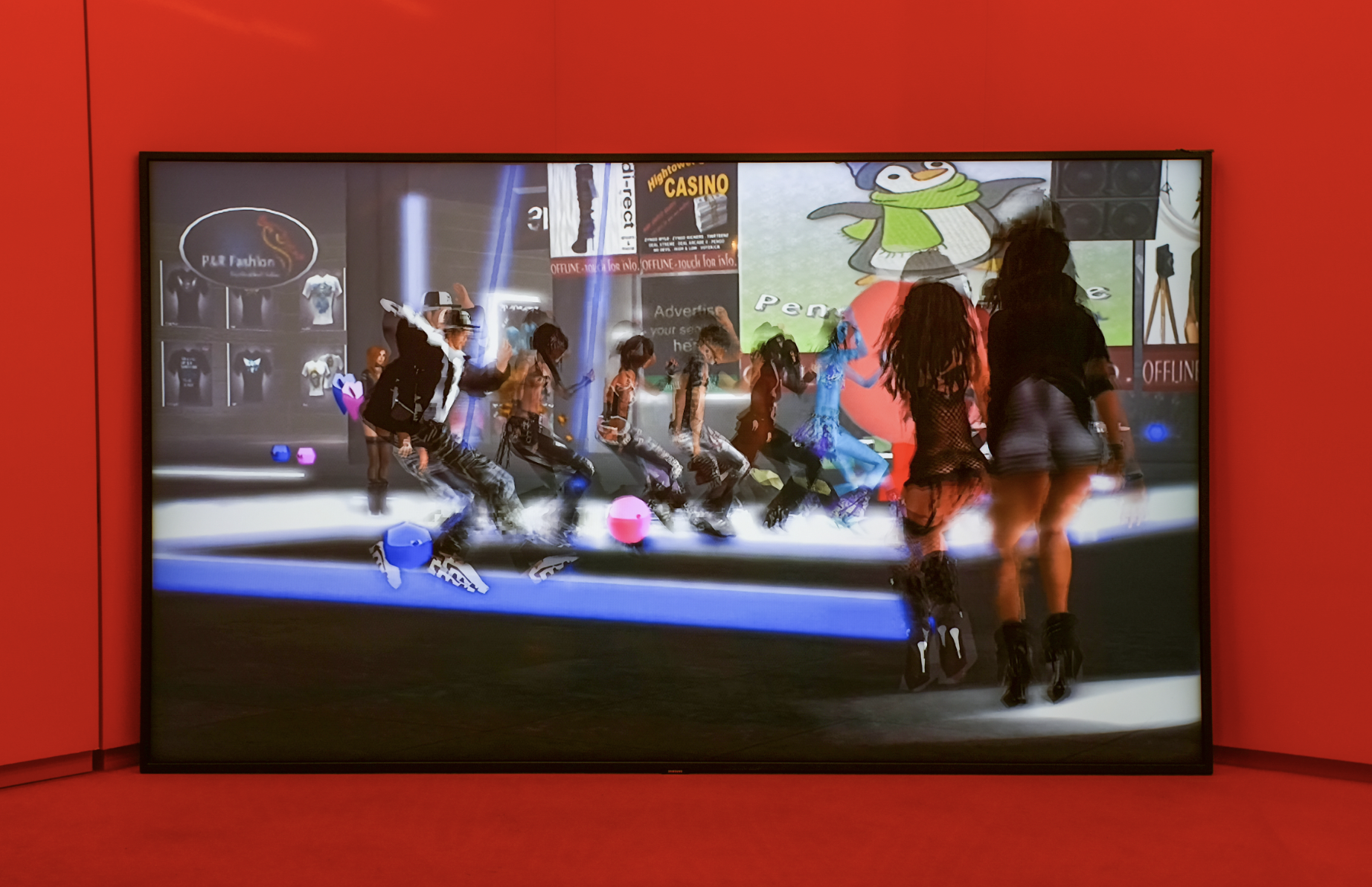
Jon Rafman, 2024.
How might the “sensitivities in this scene” differentiate, given the gallery's location?
CKE— 032c was founded in Berlin and therefore has a deep connection to the city and its creative class. In its history, themes, and ethos — while simultaneously being hyper-international — 032c is deeply tied to the city; It made sense to open the first permanent gallery here. Joerg [Koch] has been organizing shows for decades, back when he had the old office at Brunnenstraße and then in St Agnes Furthermore, Berlin is a great place for welcoming “novel” projects because the scene is relatively open to finding newness in its traditions.
SR— Berlin has established itself as an important player in the art scene. Many galleries in the city are showing exhibitions at a really high level with a real in-depth intellectual curation, and as the city is still considered a relatively large city, but with a more affordable economic structure, we find it quite accommodating for new establishments. This transition of Berlin becoming a dominant cultural city in Germany and also in general is particularly notable in the context of galleries that have migrated from Cologne, such as neugerriemschneider and Galerie Buchholz, which expanded here in the 2000s after the fall of the wall - there has been a resurgence in Berlin's cultural landscape. At the same time, there’s still room for new initiatives to rise.
CKE— So far there hasn’t been any criticism. Probably because we’re not trying to portray the gallery as something that it isn't. We’re not a non-profit or charity foundation. We’re a gallery that, just like any gallery that travels too fairs or simply organizes exhibitions, is trying to sell what you see.
With the program we want to draw attention to the hybridity of the creative industry, and specifically that of art and fashion. Artists have always collaborated with mediums outside of their personal “traditional means,” or with other artists, or with fashion brands. Likewise, fashion brands have been inspired by artists throughout time. This is nothing new. That being said, what’s recently frowned upon is the idea that the more hyphenate you are — a DJ, a photographer, an artist, a director — the less focus or authority you hold over your chosen practices. I’m not bringing this to the table to make any judgement, but rather the opposite. Shelly and I have had a longstanding vision of reframing this hybrid intellectually. 032c Gallery will provide that. It will welcome experimentation.
The space is re-thinking the means of a magazine, while the exhibition itself is also commenting on the theme of reinvention. Through Boris Groy’s essay, the show investigates how “we are required to constantly re-invent ourselves,” thereby placing us in a permanent state of uncertainty. Who places this obligation upon us?
CKE— At the end of the day, it's not an obligation. It’s as philosophical and controversial as the question regarding free will. I would argue that you put this “obligation” on yourself, but doing so almost just by being part of contemporary society, especially in creative industries where one is “required” to reinvent to stay relevant. It only becomes dangerous once the speed of these reinventions reaches a constant. Endless adoption leads to uncertainty because that's where the core of oneself might get lost.
SLR— I think “requirement” here could be quite positive rather than negative. It’s very freeing to have these possibilities to reinvent yourself constantly. And it's something that's quite exciting. To be able to access a new version of oneself is to interact with different cultures, ideas, and expressions. It’s all part of a larger game. A good example of this is Amalia Ulman. We exhibited another work by her recently “excellences & perfections,” which recently celebrated ten years. In it, she intentionally adopted the role of a hyper-glamorous woman living a very lavish public life. Her friends and close circle quickly became confused with what was real and what wasn’t, but what’s fascinating is that so did Ulman, too. She explains how she got lost in the making, and confused her personae and personality for each other.
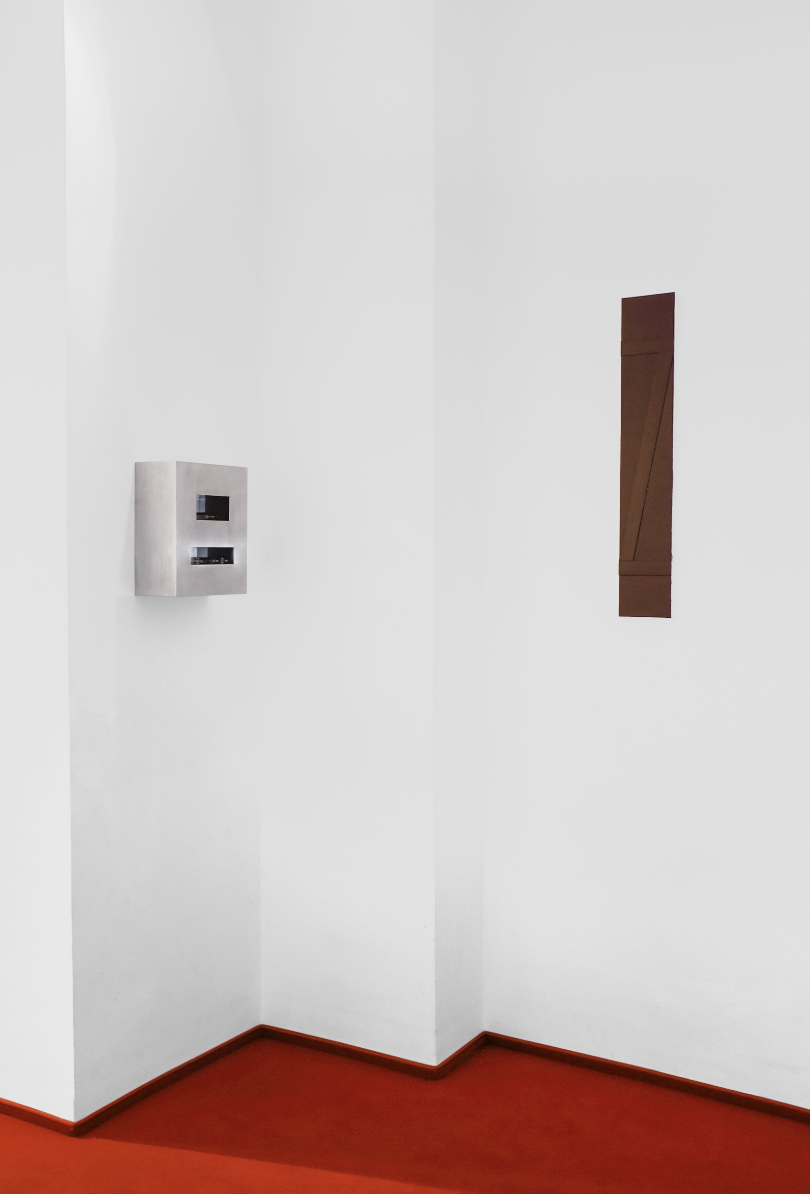

Lukas Heerich, Untitled, 2024.
Re-invention can become dangerous once the means of it is in the hands of the wrong people. And given that a lot of reinvention, as with Ulman, takes place in a virtual space or as a response to virtual hierarchies, does it not pass the risk of unregulated manipulation?
SLR— But you also have the freedom to manipulate the tools in return. As you are aware of these sets of rules, or your role as a user, that's where it becomes playful. I think that’s what’s specific about our times, that it’s easier if not even easy to get access to tools that weren’t accessible before. Circumstances under which self-creation is not only possible but infinite.
CKE— Humans were the one who built the algorithm. It’s not like we are being controlled by this otherworldly superpower. It’s not the man versus machine here—it’s you versus yourself. It’s a mechanism that we created and something that we also still control. Of course, we’re not always conscious about what we consume or in the ways in which it affects us. But once we take time to reflect upon it, question it, question ourselves, is when we get control over our self-reinvention.
How often do you reinvent yourself?
SLR— Good question. I think that we reinvented ourselves with the gallery. It’s been a shift in mindset.
CKE— For me, personal reinvention it's not so much about reinvention but rather a progressive invention. What about yourself?
I got a new haircut. A new look is always a reinvention because suddenly you are perceived differently. I think of reinvention as an external, social act. It’s dependent on the response, even though Narcissus might suggest otherwise.
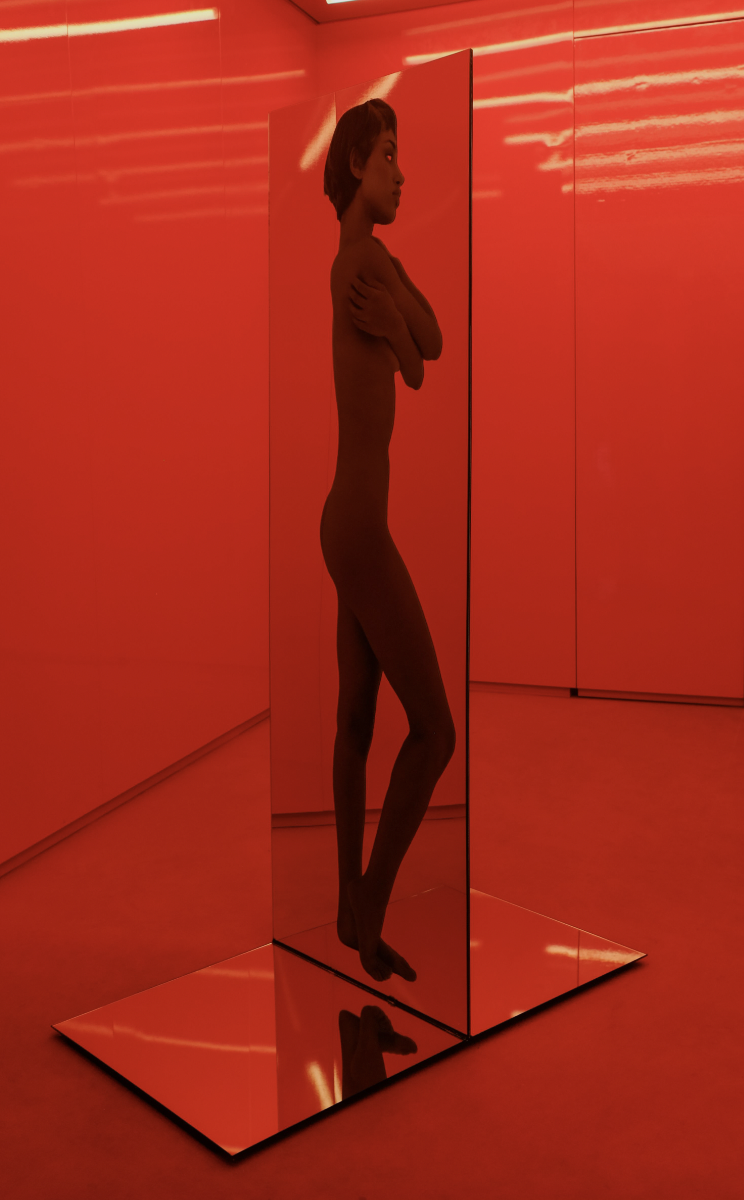
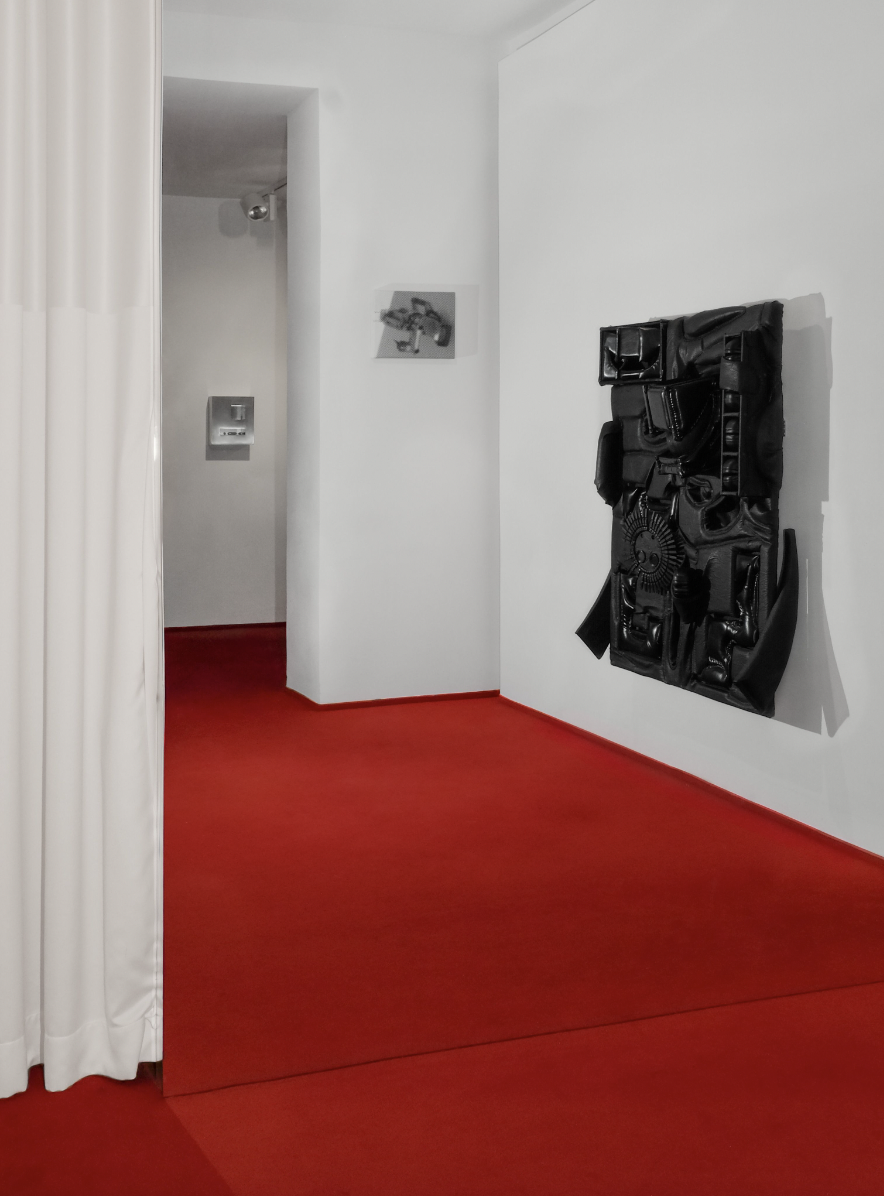
Hugo Comte, 2024.
“Productive Narcissism” will be on view at 032c Gallery in Berlin until October 8th, 2024.
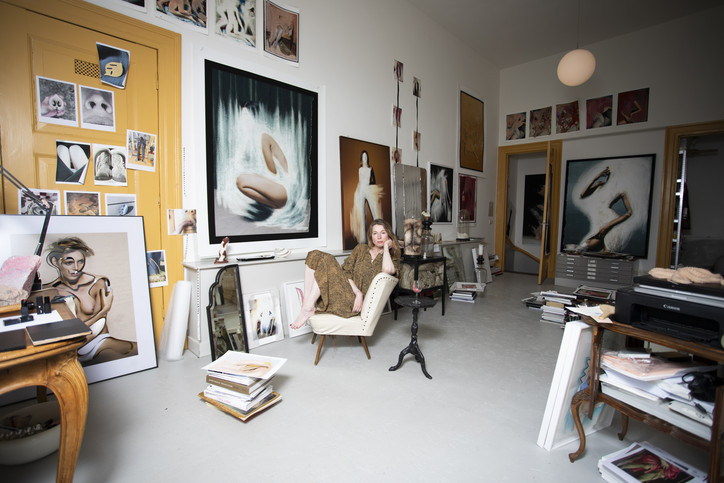
For her solo exhibition Open Arms at Anat Ebgi Gallery, which opened on Friday September 6, Dicke debuted a new body of works that continues her exploration of the signs and symbols shaping how we view the female form. In Open Arms, she expands her focus to include men’s fashion ads, art catalogs, and art history books. What connects these different interventions into modern masterpieces and male model photoshoots is a defiance of the convention that reduces women to passive objects of desire within images. At the same time, Dicke embraces the human tendency to project desires onto these images, making her revisions both sensual and fluid. Open Arms can be seen as a love letter to the art of self-representation, while critically examining what it means to engage with these representations.
Hi Amie. I’m really excited for your show at Anat Ebgi Gallery. I want to start by asking about how you first came into the art world. You were a model in New York in the early 2000s, right?
This story has become a thing of its own. I did live in New York for a year and a half as a starting artist to follow my then fresh love, but I did not model. I only worked as a teen model in Rotterdam. I was too shy to be a good model. The camera made me feel very vulnerable. I love fashion. Still, I prefer to stay on the other side of the camera. In Rotterdam, I also made sculptures and got some attention fresh out of art school. Somehow, making sculptures did not feel viable because of how masculinist it is in Europe. Instead, in New York, I found myself through all the imagery I saw on the street advertisements and magazines. Everything felt insanely new for me. I even learned how to navigate the subway because of these huge Calvin Klein posters. So, I started drawing on them and cutting them away.
What made you particularly attracted to images of young women found in fashion advertisements and magazines?
I am fascinated by how images of thin, young women are constantly pushed onto us. They often link back to archetypes like the muse or the Holy Virgin. I was studying old portraits of Mary and realized how her posture or gaze can reveal esoteric meanings. The same thing can be said about the innocent young girls I see in fashion imagery.
And you mostly construct images of faceless women in elaborated contexts, be it clothing or setting, which can be quite telling. I am curious as to why you are not fully denying our access to these women’s psychology.
My working process is full of discoveries. I rip pages out of magazines or art books, scan them and blow them up, and reproduce them on archival paper. Throughout the process, the images speak back to me, hinting at what to leave untouched and what to scrape away. In all cases, the images end up having this dualistic quality, somewhere between absence and presence. The women in my works reject the viewer's desire to identify with them but at the same time demands more attention. I find this doubling gesture very alluring, as if they took on the eternal quality of historical portrait painting.
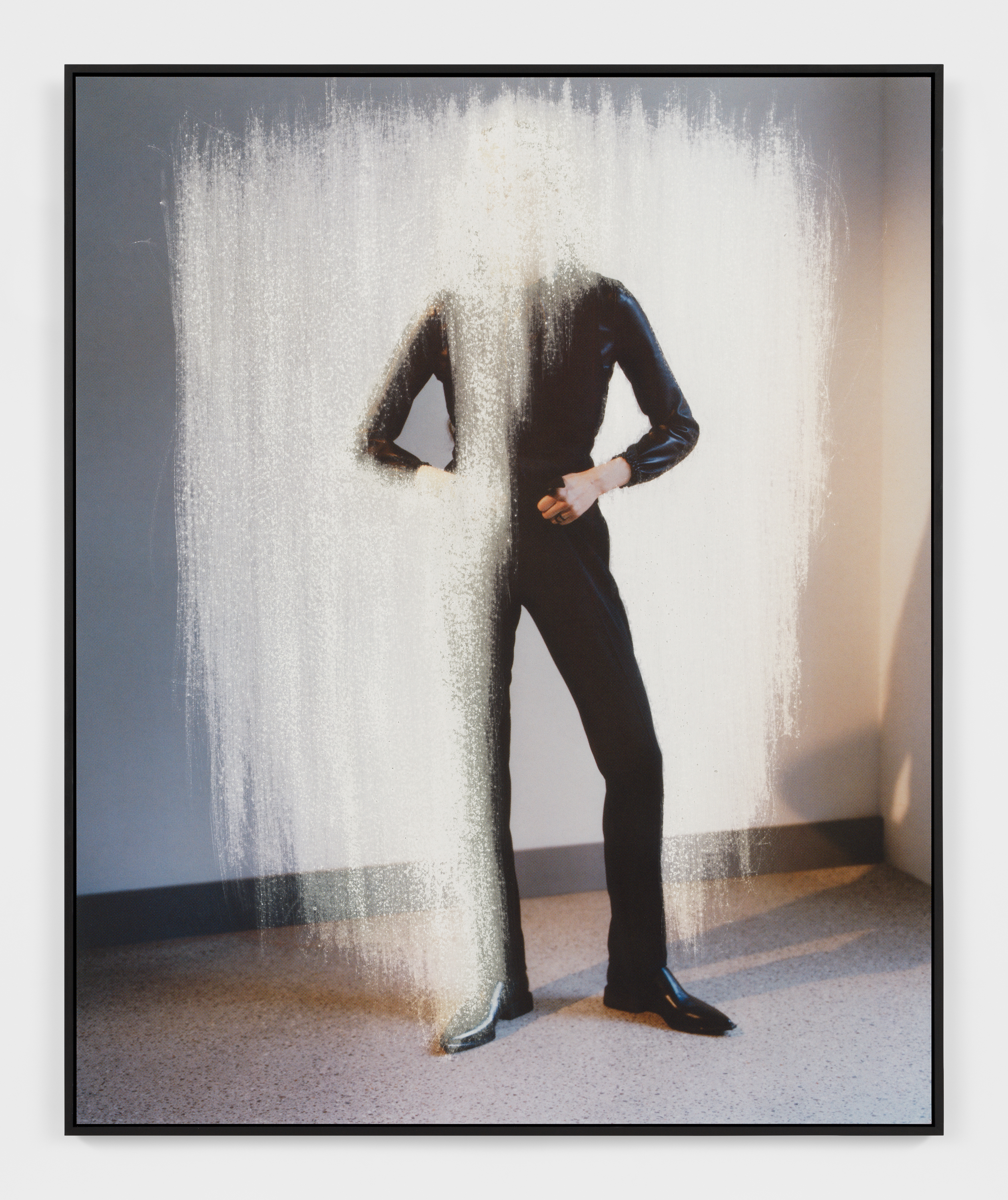
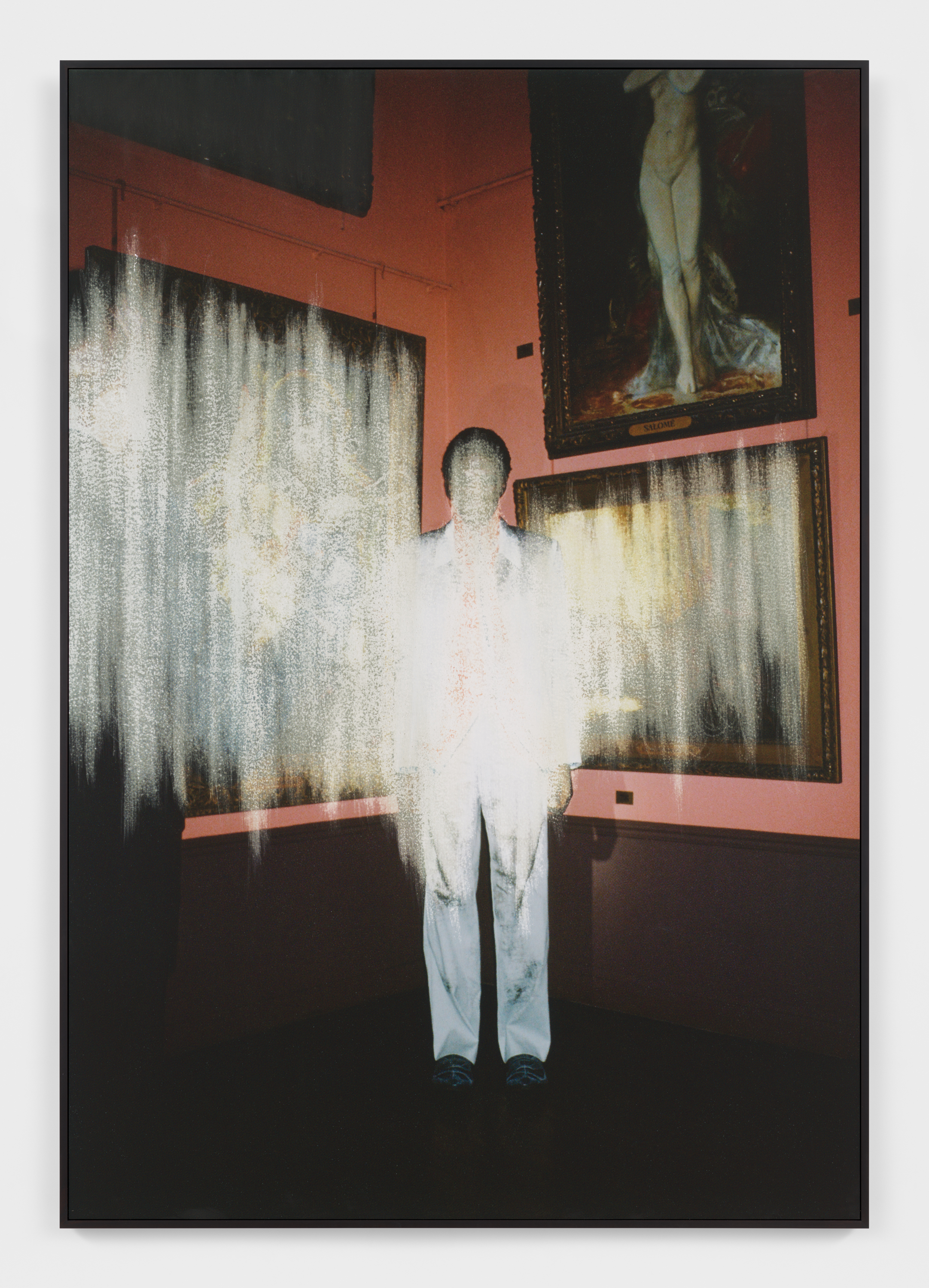
Amie Dicke, Zeitgeist, 2024. Courtesy of Anat Ebgi Gallery.
Amie Dicke, Salomé, 2024. Courtesy of Anat Ebgi Gallery.
I also noticed that in this new body of work you have started to work with images of male models. The figures in Zeitgeist (2024) and Salomé (2024) have a more masculine build.
I realized there is something about masculine features, either square face shapes or bigger shoulders, that lend well to my abrasion. The Salomé piece is close to my heart. It was originally a magazine shoot of a male model standing in a museum, with several paintings behind him. I have always been interested in looking at the photographic reproduction of paintings, thinking about how they come to us and what we learn from them. While looking at the image, I saw a nude painting in the top right corner, with her face perfectly cut off from the frame. However, I can still identify her as Salomé by the antique placard placed on the painting’s frame. I was thinking about censoring the title but soon realized how perfect it is in relation to the faceless male model in the front. Salomé famously requested the beheading of John the Baptist.

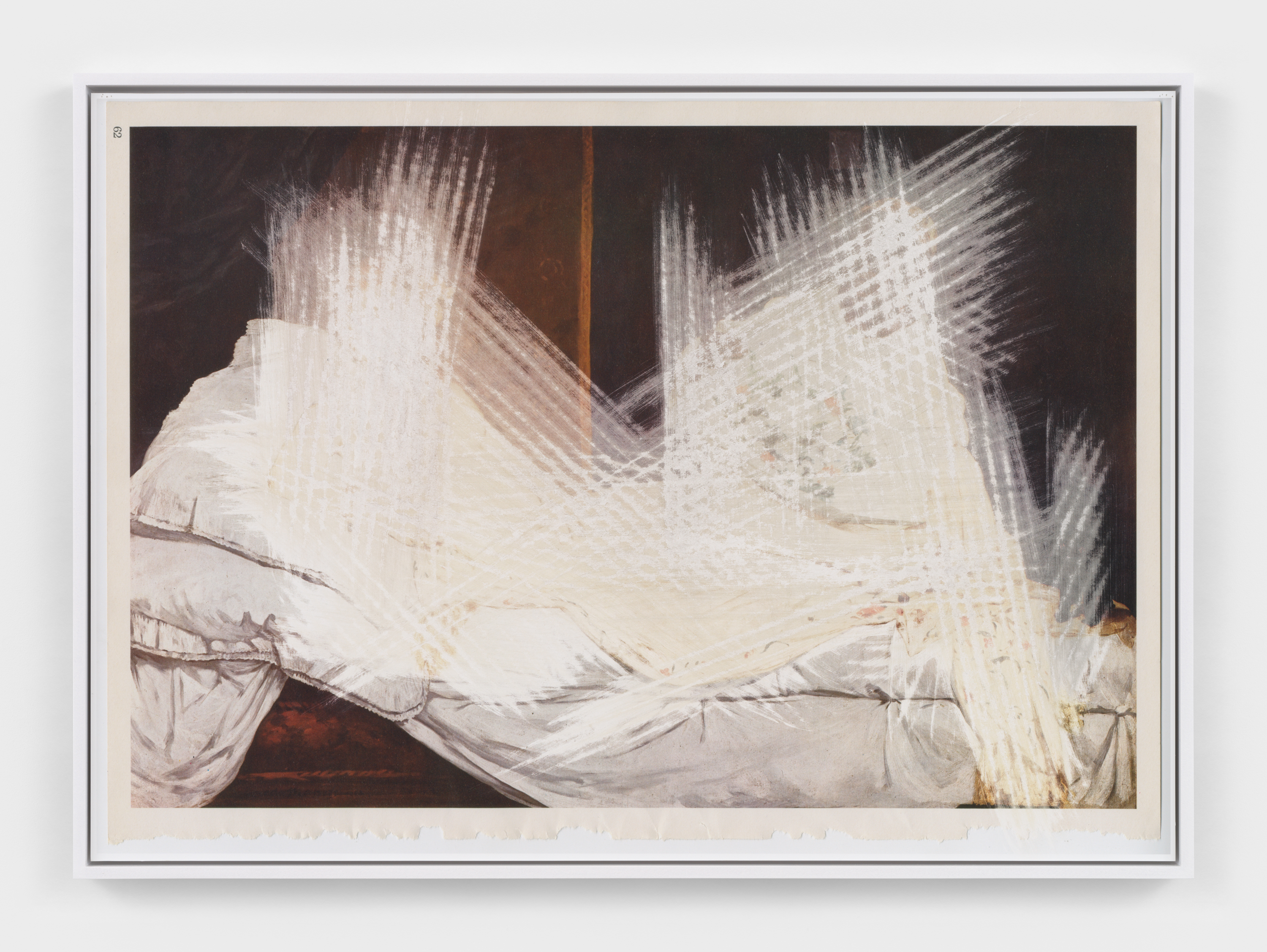
Amie Dicke, The Bathers, 2024. Courtesy of Anat Ebgi Gallery.
Amie Dicke, Nude, 2024. Courtesy of Anat Ebgi Gallery.
You’ve also started working with the history of Western art itself. The Bathers (2024) and Nude (2024) strike me as full-frontal assaults on their source materials, Renoir’s The Large Bathers (1887) and Manet’s Olympia (1863) respectively. What is your motivation for taking a revisionist approach to these paintings, which are so important to the tradition of European modernism?
I must confess I find it very easy to attack The Large Bathers. I am not really a fan of that painting, and I wanted to question its position within art history. Painting is an act of mythmaking, and I am annoyed at how The Large Bathers reinforces the trope of naked young women being spied on from a distance. I want to see these bathers in a different light so now they are drowning or trying to survive in a sea of lipstick. With Olympia, I am curious about what remains of a reclining classical nude if I take everything away. In the end, Nude takes on a Cubist tradition. Also, you can see a page number on the edges of Nude because I appropriated a reproduction of the original painting from an older magazine. The colors are a bit off, which made my sandpaper intervention more interesting.

Amie Dicke, Church, 2024. Courtesy of Anat Ebgi Gallery.
Your preoccupation with questions of authenticity and authorship feels most prominent in Church (2024).
Yes, Church is based on the reproduction of a painting I found in a catalog. In the painting, there were two praying figures in a church. I am intrigued by the beautiful, dramatic pleats they are wearing. Once I erase the girls, the pleats take on a very spiritual, almost ghostly quality. In the left corner, you see shadows originally belonging to one of the figures, but now the shadows make the pleats come alive. I was born and raised in a Pentecostal church, so the Holy Spirit is something I am very familiar with.
I read somewhere that your studio is in a church. Is that right?
My studio is in a formerly Catholic church in the center of Amsterdam. I am renting one of the two sacristies next to the altar. The church was secularized but they still have services with another group of Christians on Sunday mornings. Sometimes the church functions as a voting station. Patti Smith performed there too. I sometimes climb onto the altar to find a better Wi-Fi connection. A lot of the days the church is empty, and I am just alone in the building.
Are you still religious?
No, but I still care about the devotional labor in my works. Devotion is very beautiful. I want to be able to train myself to lean into the inner spirits of great literature or painting, and to lean into myself and others. Those emotions and feelings I felt in the Pentecostal church still hold meaning to me. Also, once you have learned how to pray, it stays with you.
I imagine working in a church easily brings out those feelings too.
Yes. Those feelings are everywhere with me. It is more in my heart. Growing up as a young woman in a Pentecostal church and in a very Catholic country, I have always been annoyed by rules and power imbalances within the church. It’s always a man standing there and preaching. Not to mention the Madonna-whore complex. In the Bible, a lot of the female characters are usually sidelined or just presented as a temptress. I want to represent them differently.
Are you then freeing women from the confines of great books and modernism?
I’m not sure if I am freeing them, but I am freeing myself. Maybe at a certain point I will be really free, then I am curious what I am going to make. Too much freedom is panic, right?